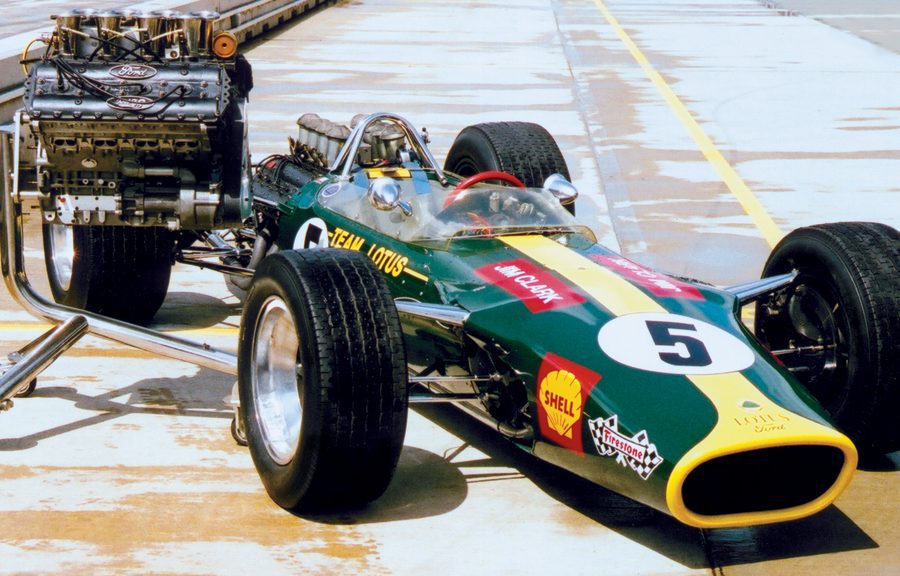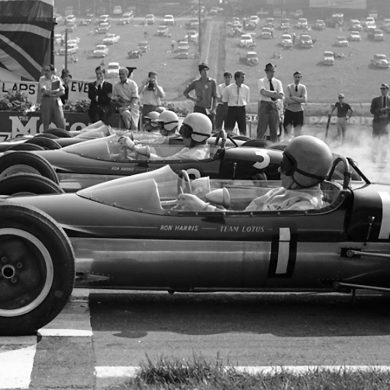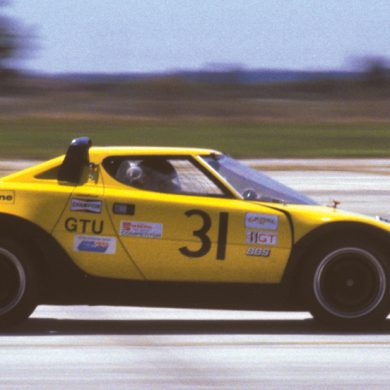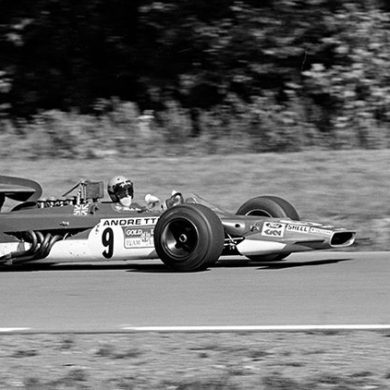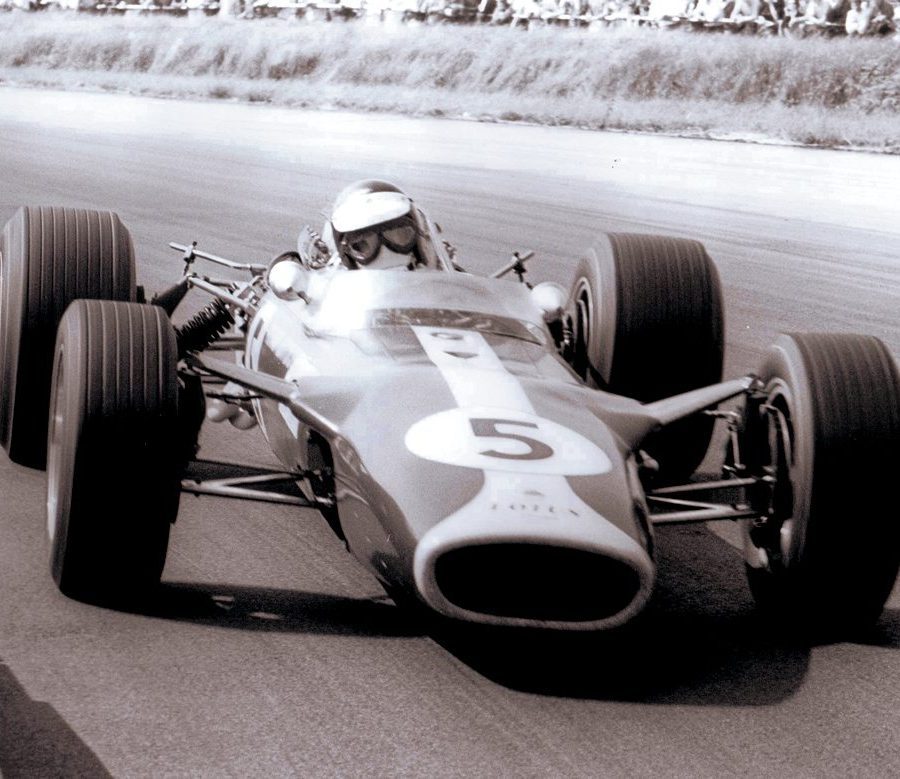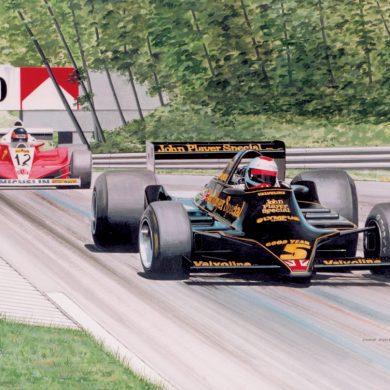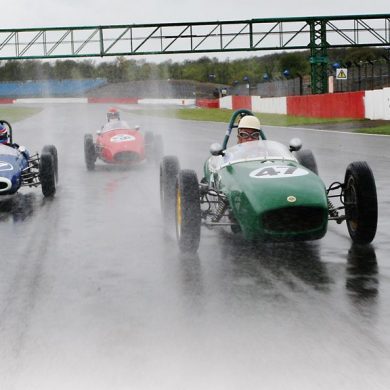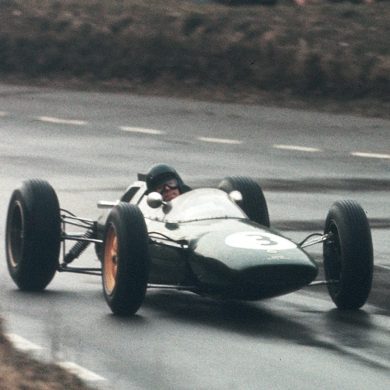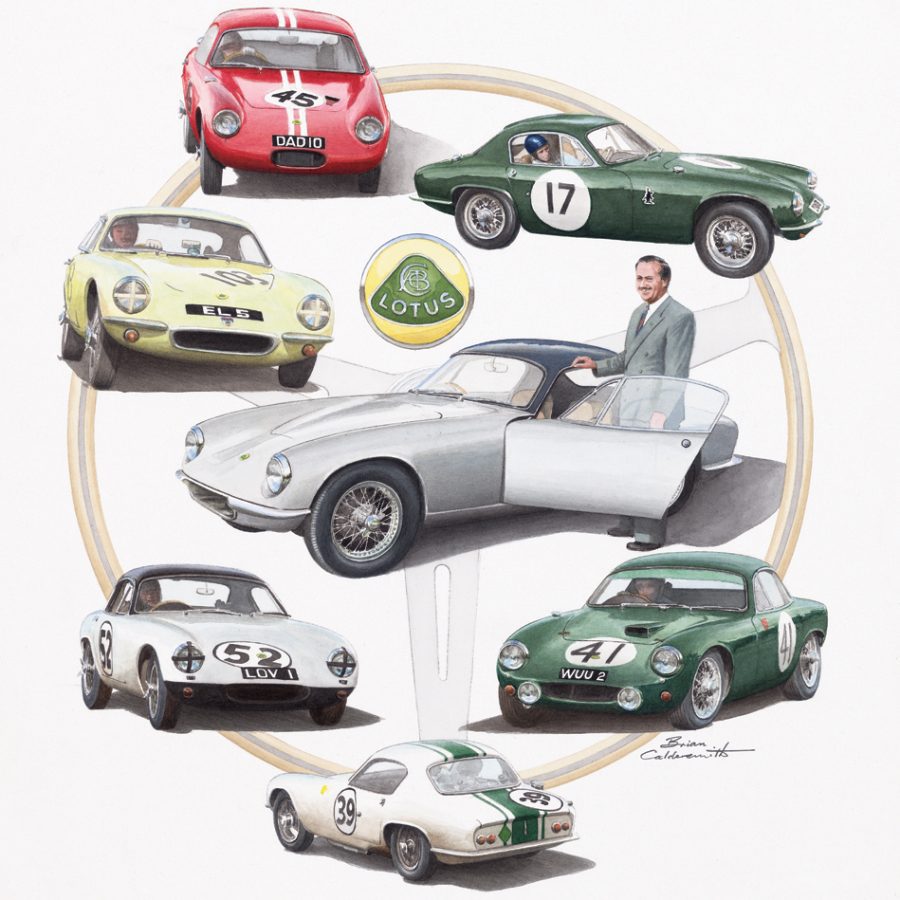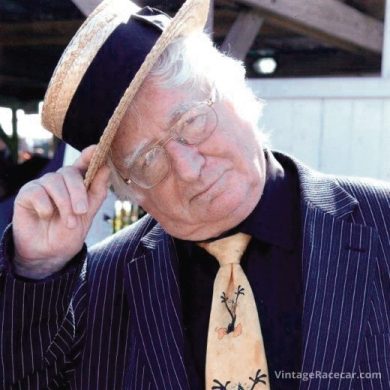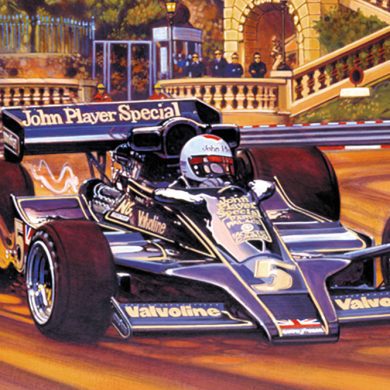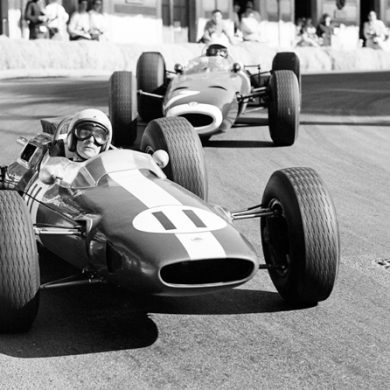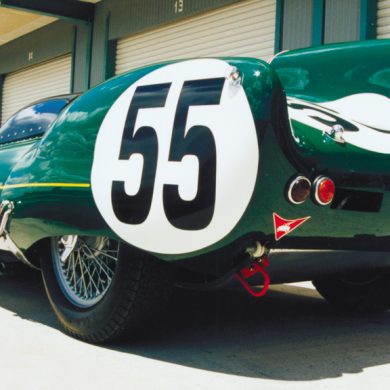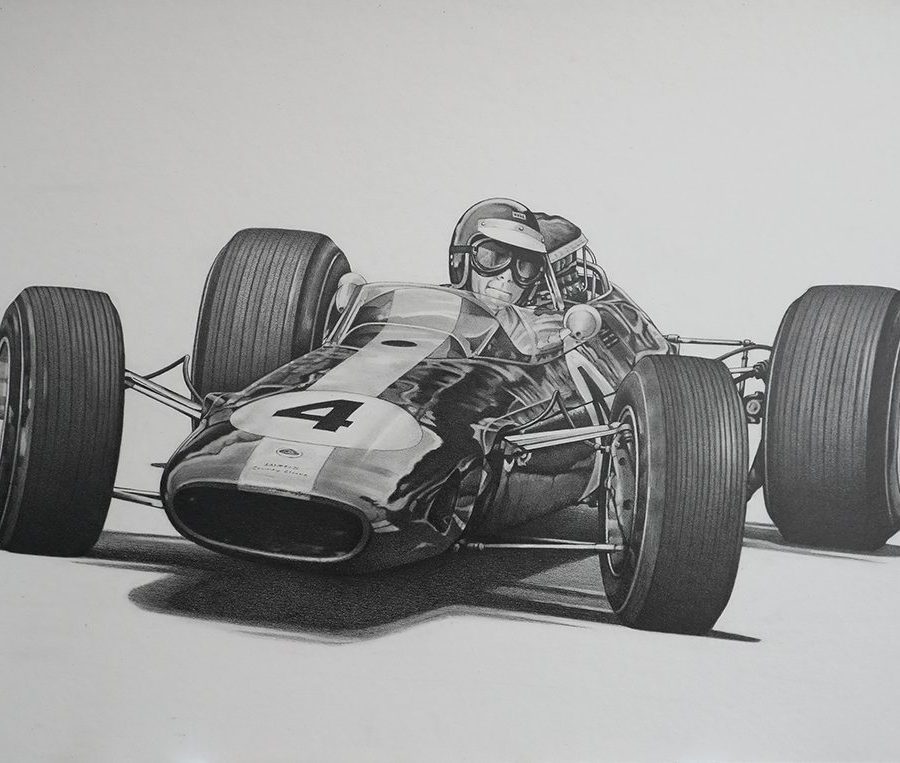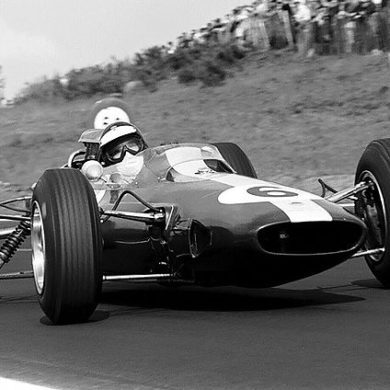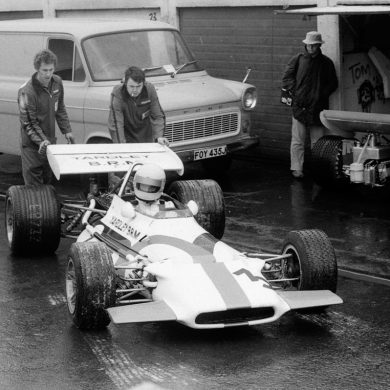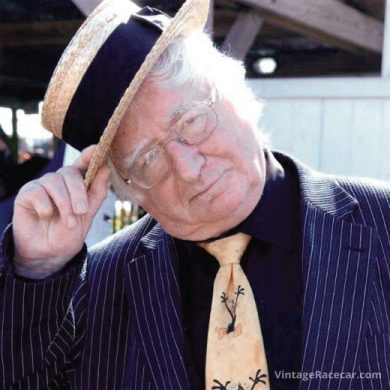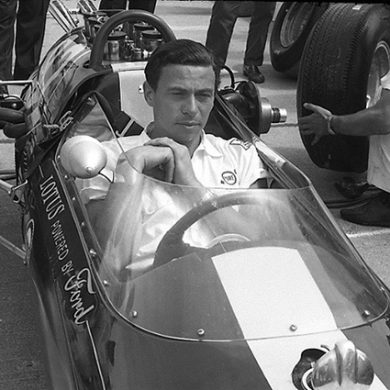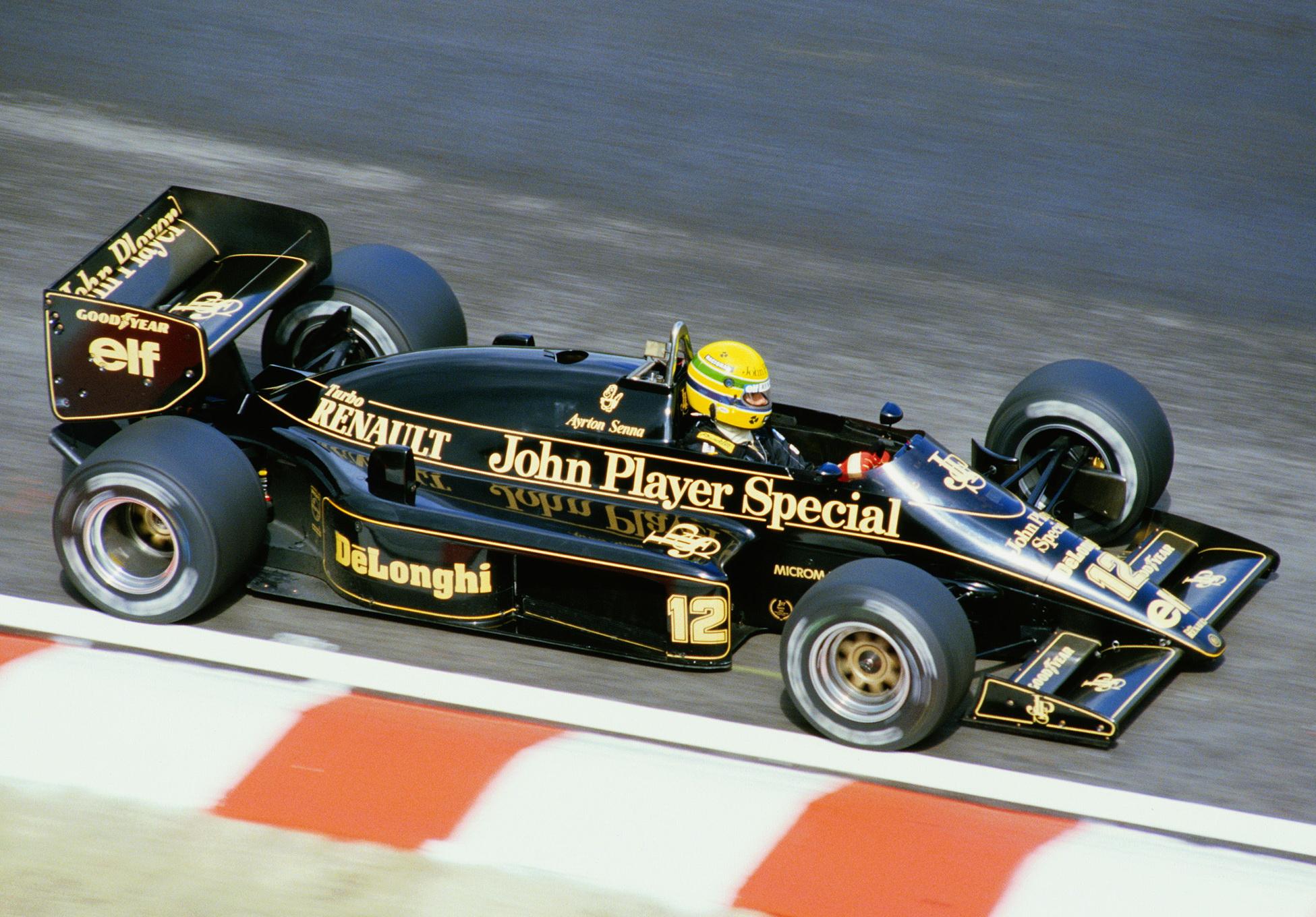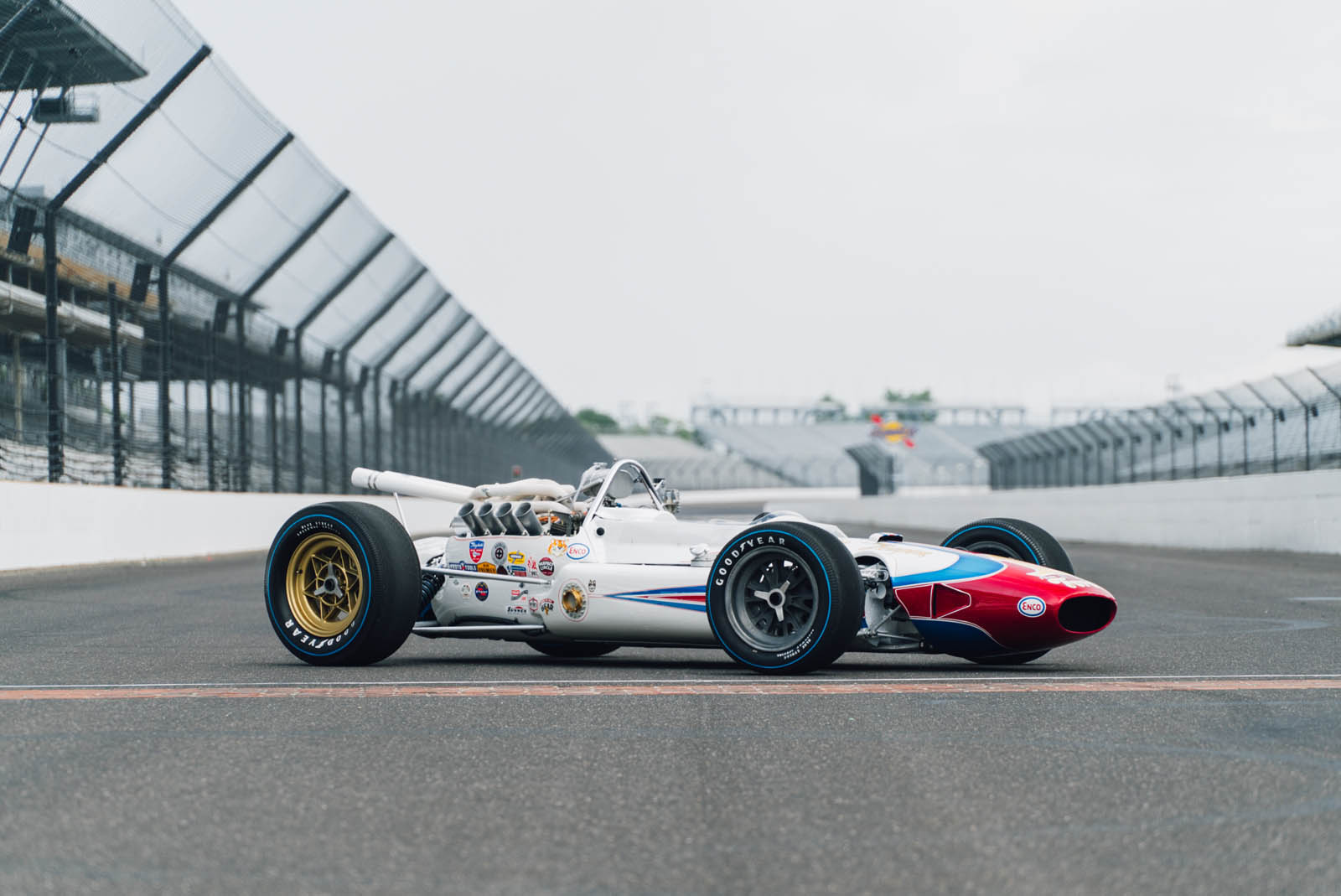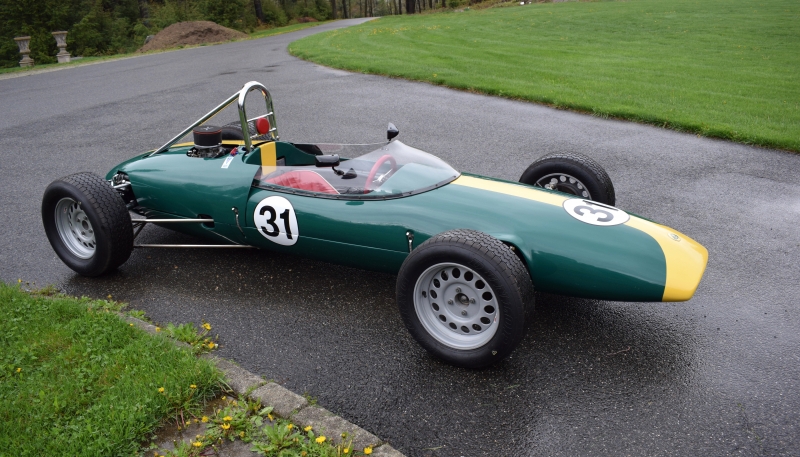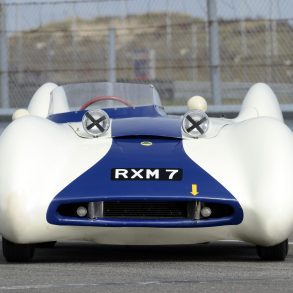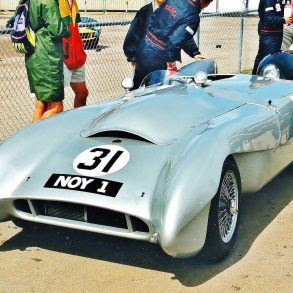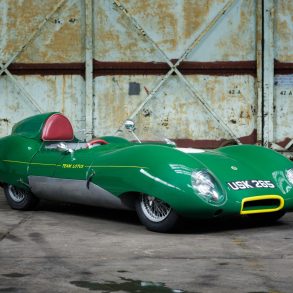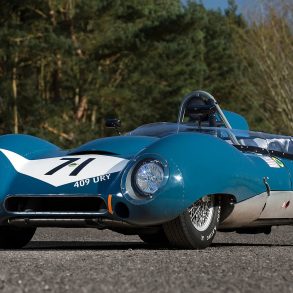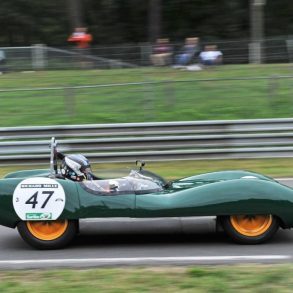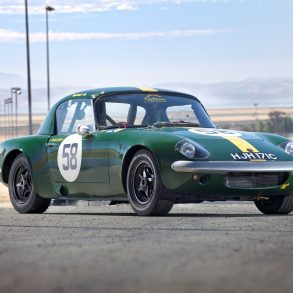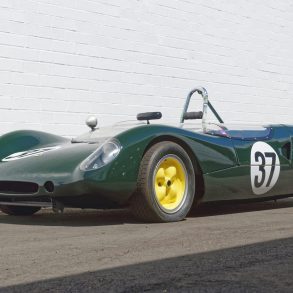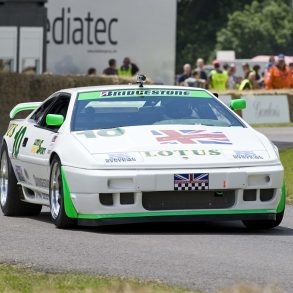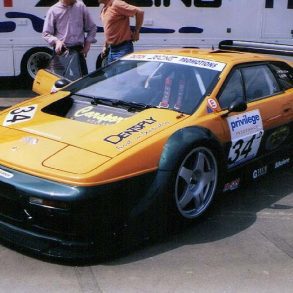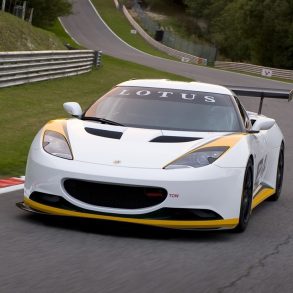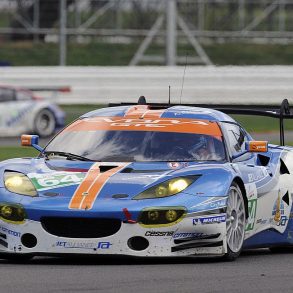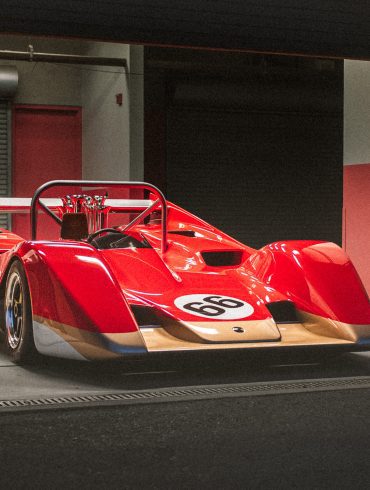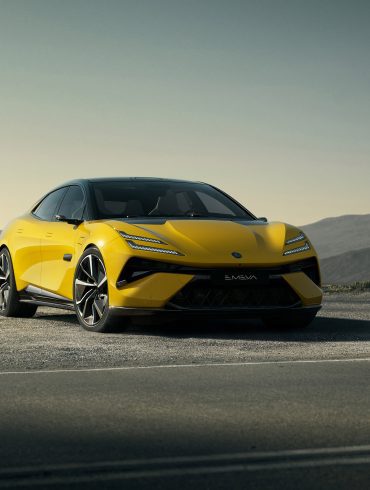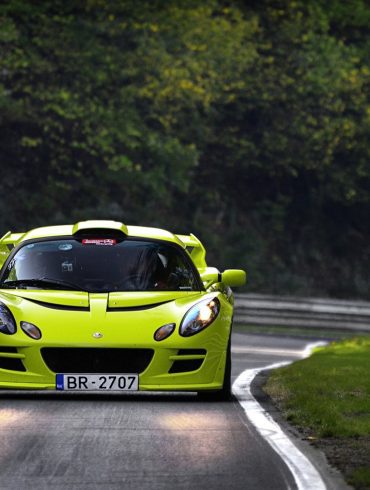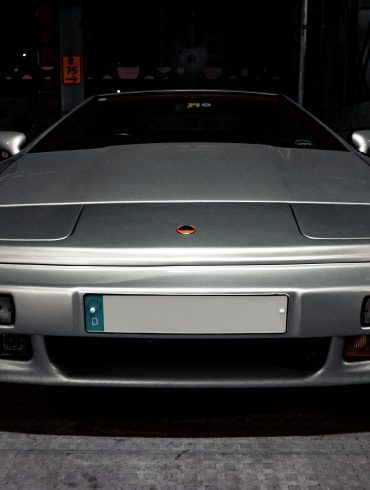Lotus Race Cars
Forget brute force; when it comes to racing, Lotus has always believed that less is more. Get ready to explore the incredible history of Lotus race cars, where lightweight engineering, surgical precision, and a relentless pursuit of driving thrills have created some of the most iconic machines to ever tear up a track.
Full Model List / Features & Stories / Formula 1 / IndyCar / Junior Formula / Sports Racers / Best Lotus Race Cars
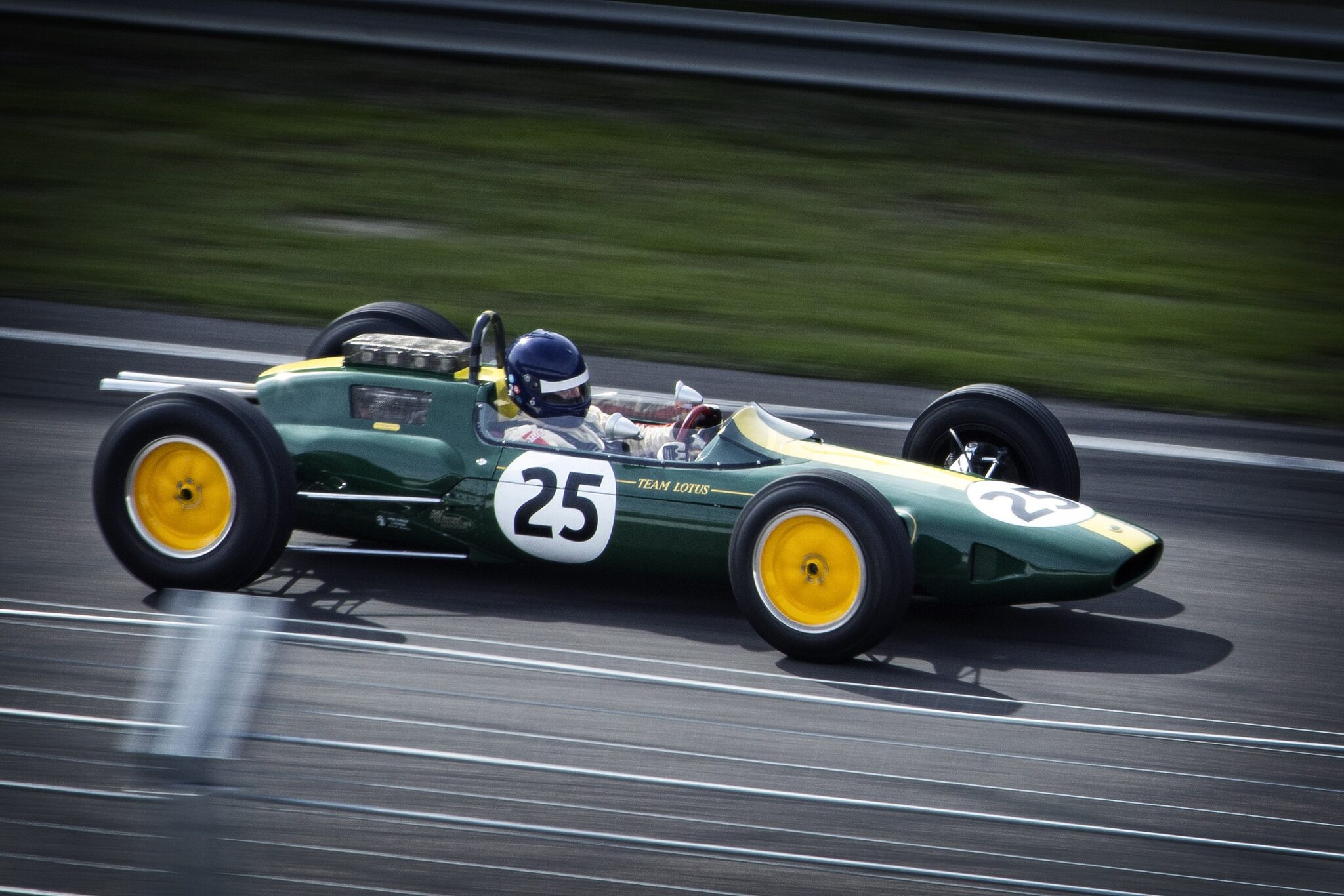
Every Lotus Race Car Ever Made
First up is Lotus and F1 racing. Lotus first entered Formula One through its sister company Team Lotus in 1958. A Lotus Formula One car driven by Stirling Moss won the marque’s first Grand Prix in 1960 at Monaco. Major success came in 1963 with the Lotus 25, which won Team Lotus its first F1 World Constructors Championship. Team Lotus continued to be a major player in Formula One up until the late 1980s. In all it had five Drivers’ Championships and one Constructors championship. There have been many flavors of the Lotus racing machines over the years. The race team itself has been known as Team Lotus, Lotus Racing and there is even a team sponsored by Lotus Cars (2012-1015 F1 season). Below we take you through a detailed list of every Lotus race car model we could find. Sit back and enjoy because this could take a while.
Lotus F1 Cars
Lotus 12 (F1) (1957)
Lotus 16 (F1) (1958 - 1960)
Lotus 18 (F1) (1960 - 1961)
Lotus 21 (F1) (1961)
Lotus 24 (F1) (1962)
Lotus 25 (F1) (1962 - 1964)
Lotus 33 (F1) (1964 - 1965)
Lotus 43 (F1) (1966)
Lotus 49 (F1) (1967 - 1970)
Lotus 63 (F1) (1969)
Lotus 72 (F1) (1970 - 1972)
Lotus 77 (F1) (1976)
Lotus 78 (F1) (1977 - 1978)
Lotus 79 (F1) (1978 - 1979)
Lotus 80 (F1) (1979)
Lotus 87 (F1) (1980 - 1982)
Lotus 88 (F1) (1981)
Lotus 91 (F1) (1982)
Lotus 92 (F1) (1983)
Lotus 93T (F1) (1983)
Lotus 94T (F1) (1983)
Lotus 95T (F1) (1984)
Lotus 97T (F1) (1985 - 1986)
Lotus 98T (F1) (1986 - 1987)
Lotus 99T (F1) (1987)
Lotus 100T (F1) (1988)
Lotus 101 (F1) (1989)
Lotus 102 (F1) (1990 - 1992)
Lotus 107 (F1) (1992 - 1994)
Lotus 109 (F1) (1994)
Lotus T127 (F1) (2010)
Lotus T128 (F1) (2011)
Lotus IndyCar Cars
Lotus 29 (IndyCar) (1963)
Lotus 34 (IndyCar) (1964)
Lotus 38 (IndyCar) (1965)
Lotus 42 (IndyCar) (1966-1967)
Lotus 56B (IndyCar) (1968)
Lotus 64 Ford (IndyCar) (1969)
Lotus 96T (IndyCar) (1984)
F2, F3, Formula Junior/Ford
Lotus 12 (F2) (1958)
Lotus 16 (F2) (1960 - 1961)
Lotus 18 (F3) (1960 - 1961)
Lotus 20 (F3) (1961)
Lotus 22 (F3) (1962 - 1965)
Lotus 27 (1963)
Lotus 31 (1964 - 1965)
Lotus 31 (F3) (1964)
Lotus 32 (1964 - 1965)
Lotus 35 (1965)
Lotus 35 (F3) (1965)
Lotus 39 (1965 - 1966)
Lotus 41 (F3) (1966)
Lotus 44 (1967)
Lotus 48 (1967)
Lotus 51 (1967 - 1969)
Lotus 55 (F3) (1968)
Lotus 59 (F2/F3) (1969 - 1970)
Lotus 61 (F Ford) (1969)
Lotus 69 (F2/F3/F Ford) (1970)
Lotus 70 (F5000/Form A) (1970)
Lotus 73 (F3) (1972 - 1973)
Lotus 74 (F2) (1973)
Misc Lotus Race Cars
Lotus Mark I (1948)
Lotus Mark II (1949 - 1950)
Lotus Mark III (1951)
Lotus Mark IV (1952)
Lotus Mark VIII (1953 - 1955)
Lotus Mark VI (1953 - 1957)
Lotus Mark IX (1954 - 1955)
Lotus 13 (Eleven S2) (1956 - 1958)
Lotus Eleven (1956 - 1957)
Lotus Mark X (1956 - 1958)
Lotus 14 (Elite) (1957 - 1963)
Lotus 15 (1958 - 1960)
Lotus 17 (1959)
Lotus 19 (1960 - 1962)
Lotus LX (Le Mans) (1960)
Lotus 23 (1962 - 1963)
Lotus 26R (1962 - 1966)
Lotus 30 (1964)
Lotus 40 (1965)
Lotus 47 (1966 - 1970)
Lotus Europa Type 62 (1969)
Lotus Esprit X180R (1991 - 1994)
Lotus Esprit Type 114 (1996 - 1997)
Lotus Exos T125 (2010)
Lotus Evora Type 124 (2010)
Lotus Evora GT4/Cup (2010)
Lotus Evora GTE (2011)
Lotus T128 (Le Mans) (2012)
Lotus Formula 1 Cars
First up is Lotus and F1 racing. Lotus first entered Formula One through its sister company Team Lotus in 1958. A Lotus Formula One car driven by Stirling Moss won the marque’s first Grand Prix in 1960 at Monaco. Major success came in 1963 with the Lotus 25, which won Team Lotus its first F1 World Constructors Championship. Team Lotus continued to be a major player in Formula One up until the late 1980s. In all it had five Drivers’ Championships and one Constructors championship. The team took a hiatus from F1 from 1994 till 2010 when a a new Malaysian team called Lotus Racing was awarded an entry. The new team used the Lotus name under licence from Group Lotus and was unrelated to the original Team Lotus. This is where things get crazy. It involves court cases and all sorts of other fun, but the net is that in 2012 Lotus Renault GP was rebranded as Lotus F1 Team and its cars were badged as Lotuses, while Team Lotus was renamed Caterham F1 Team and its cars were badged as Caterhams.
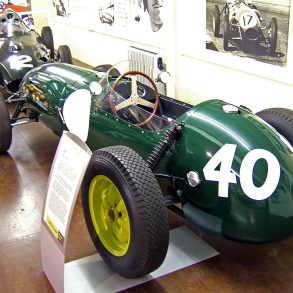
Lotus 12 (F1)
Season: 1957
The Lotus 12 was a Formula Two and Formula One racing car. Despite its engineering advances, the 12 was not a success in F1. In F2, the car won the class in the mixed F1/F2 1958 BRDC International Trophy.
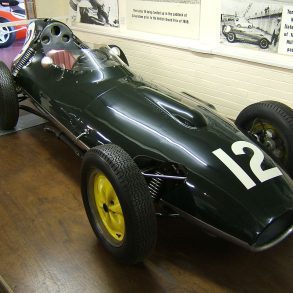
Lotus 16 (F1)
Season: 1958-1960
The Lotus 16 was constructed to compete in both the Formula One and Formula Two categories, and was the first Lotus car to be constructed for Formula One competition.
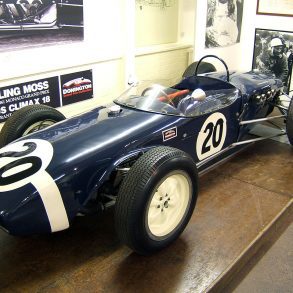
Lotus 18 (F1)
Season: 1960-1961
Lotus 18 was the first mid-engined car built by Lotus and was a marked improvement over Chapman’s early and only moderately successful front-engined formula cars. The 18 was replaced by the 21 in F1.
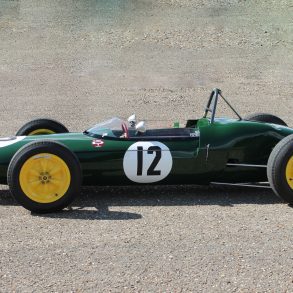
Lotus 21 (F1)
Season: 1961
The Lotus 21 had a tubular spaceframe structure skinned with fibreglass panels. Used by the works Lotus team, the 21 was the first works Lotus to win a Formula One Grand Prix
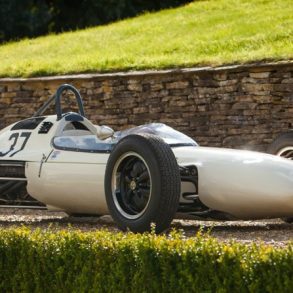
Lotus 24 (F1)
Season: 1962
Despite some early success in non-Championship Grands Prix, it was eclipsed by the technically superior Lotus 25 and rarely featured in the points in World Championship races.
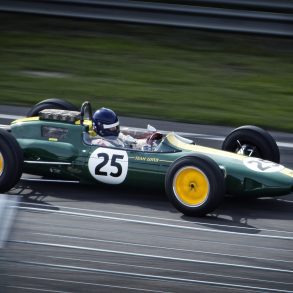
Lotus 25 (F1)
Season: 1962-1964
It was the first fully stressed monocoque chassis to appear in Formula One. In the hands of Jim Clark it took 14 World Championship Grand Prix wins and propelled him to his 1963 World Championship title.
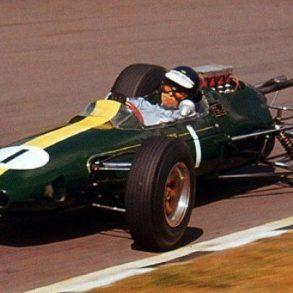
Lotus 33 (F1)
Season: 1964-1965
A development of the successful Lotus 25, in the hands of Jim Clark it won 5 World Championship Grands Prix in 1965, assisting Clark to his second World Championship.
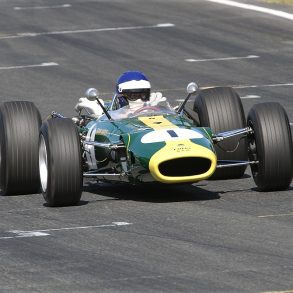
Lotus 43 (F1)
Season: 1966
The Lotus 43 was a Formula One racing car designed by Colin Chapman for the 1966 season. Hampered by its heavy and unreliable BRM engine, it won only one race, the 1966 United States Grand Prix.
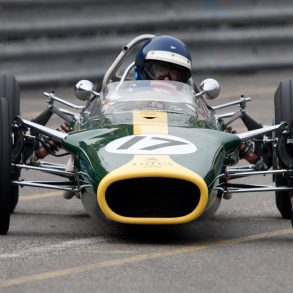
Lotus 49 (F1)
Season: 1967-1970
Designed around the Cosworth DFV engine and built for the 1967 season, the Lotus 49 won on debut. Graham Hill went on to win that year’s title and the car continued winning races until 1970.
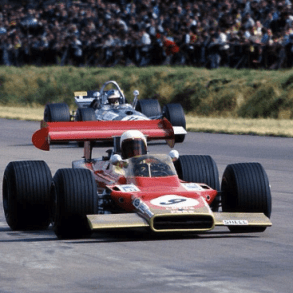
Lotus 63 (F1)
Season: 1969
The Lotus 63 was an experimental F1 car for the 1969 season. Like the Lotus 56 for the Indy 500 (and later F1), the 63 chassis was designed around a four wheel drive system. It was tested in a race in 1969.
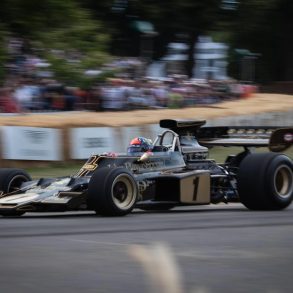
Lotus 72 (F1)
Season: 1970-1972
Introduced partway through 1970 the 72 was immediately competitive. Rindt was almost certainly going to win the championship but was killed in a qualifying crash (becoming F1’s only posthumous champion).
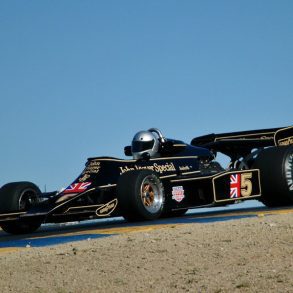
Lotus 77 (F1)
Season: 1976
The car was a stop-gap means to an end for Lotus after the failure of the Lotus 76 and the obsolescence of the Lotus 72. The 77 was slimmer and lighter than the the 72, with similarly powered Cosworth DFV.
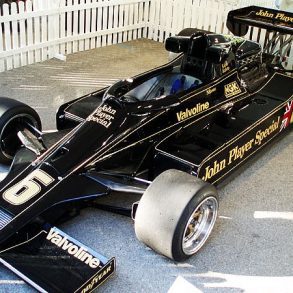
Lotus 78 (F1)
Season: 1977-1978
Known as the “wing car”, the Lotus 78 raced in 1977 and 1978. This was the car that started the F1 ground effects era. The breakthrough was Chapmans insights on low drag air penetration.
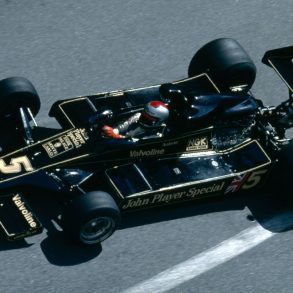
Lotus 79 (F1)
Season: 1978-1979
The Lotus 79 was the first F1 car to take full advantage of ground effects aero, pioneered by the Lotus 78. The 79 was almost unbeatable during 1978, winning Lotus the drivers and constructors championship.
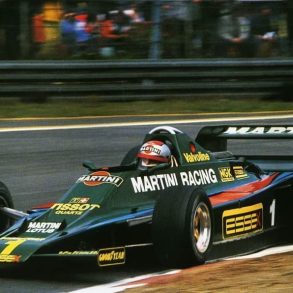
Lotus 80 (F1)
Season: 1979
In 1979, the 79 was to be replaced by the Lotus 80. It was designed to take ground effects to the absolute max. It was not competitive and the Lotus 79 was modified and took over for the rest of the season. A setback.
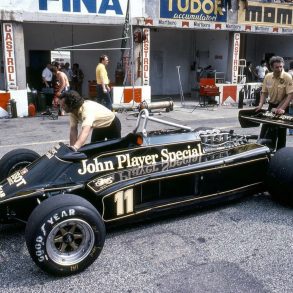
Lotus 87 (F1)
Season: 1980-1982
The 87 continued to leverage ground effects and this time added a stiffer, carbon fiber and kevlar chassis. The car was not competitive enough to fight for victories, even though the drivers did get some points.
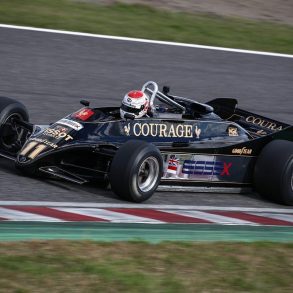
Lotus 88 (F1)
Season: 1981
The 88 had a twin chassis, one inside the other. The inner chassis would hold the cockpit and would be independently sprung from the outer one. Other teams complained and the FIA banned the car.
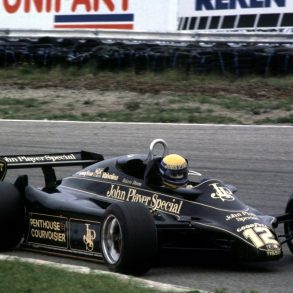
Lotus 91 (F1)
Season: 1982
Powered by the Ford Cosworth DFV the 91 was uncomplicated and was designed from scratch after Lotus had some bad years. The new car was the first Lotus chassis to use carbon brakes. The 91 was mostly competitive on ultra fast tracks.
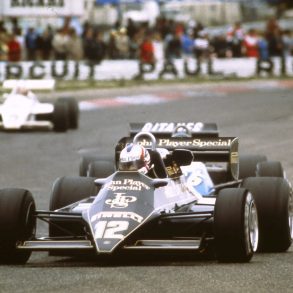
Lotus 92 (F1)
Season: 1983
The last Chapman era car. The 92 was used for the first part of the season. It was the last non-turbo car by Lotus (until the turbos were banned in 1990) and the first car to be fitted with active suspension.
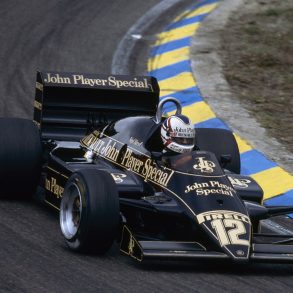
Lotus 93T (F1)
Season: 1983
The year that Lotus switched from Cosworth to Renault power (the first Lotus to use the Renault Gordini EF1 turbo). The 93T was replaced during the season with the Lotus 94T (Mansell drove it twice).
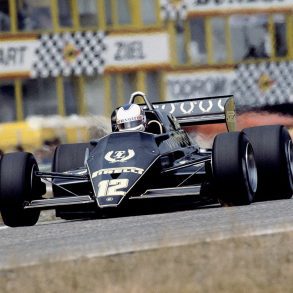
Lotus 94T (F1)
Season: 1983
This car was used in the second part of the ’83 F1 season. Powered by the Renault Gordini EF1 V6 turbo engine it was moderately successful and was able to get third place in the 1983 European grand prix.
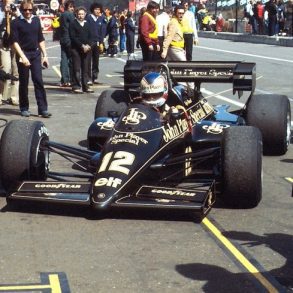
Lotus 95T (F1)
Season: 1984
Built for the 1984 season, the 95T was powered by the Renault Gordini EF4 V6 turbo engine. The car was driven de Angelis and Mansell who were competitive in a season dominated by McLaren.
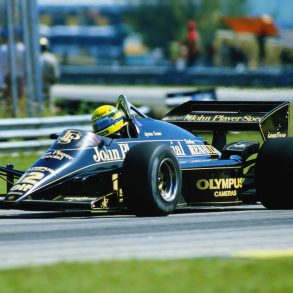
Lotus 97T (F1)
Season: 1985-1986
A development of the previous year’s 95T, the car was powered by the turbocharged 1.5-litre Renault EF15B V6 engine. The car was a success, taking 8 poles, (7 for Senna and 1 for de Angelis), and 3 wins.
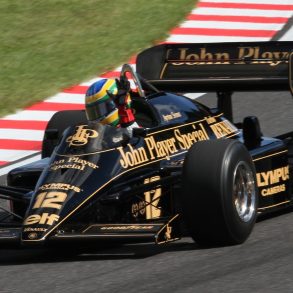
Lotus 98T (F1)
Season: 1986-1987
A development of the previous year’s 97T, the car was raced by Ayrton Senna and Johnny Dumfries. The engine was a Renault EF15B turbocharged V6 engine (one of the most powerful in the sport ever).
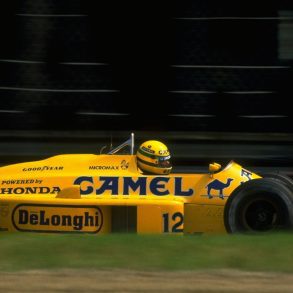
Lotus 99T (F1)
Season: 1987
John Player Special was replaced by Camel as title sponsor for 1987. The 99T was the second Lotus chassis to be fitted with electronic active suspension and won multiple races at the hands of Ayrton Senna.

Lotus 100T (F1)
Season: 1988
Used during the 1988 F1 season the Lotus 100T was an updated version of the 99T below. Technically the car was virtually unchanged, except for redesigned nose and rear bodywork.
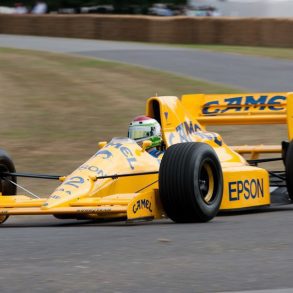
Lotus 101 (F1)
Season: 1989
The Lotus 101 was Team Lotus’s entry for the 1989 Formula One season. While the team was optimistic the 101 was a poor racing car and was very underpowered compared to the Hondas of the era.
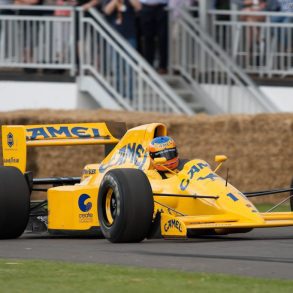
Lotus 102 (F1)
Season: 1990-1992
The Lotus 102 was a F1 car for use in the 1990 season. The 102 was an evolution of the Lotus 101 and would eventually go on to compete in 37 races spanning three seasons from 1990 until 1992.
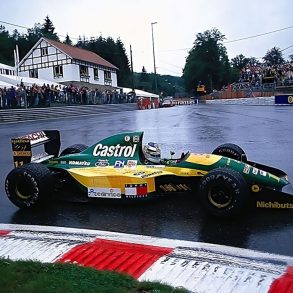
Lotus 107 (F1)
Season: 1992-1994
The Lotus 107 was designed for the 1992 Formula One season, and used throughout most of 1992, 1993 and part of 1994, it brought in a final, short-lived period of competitiveness for the team in F1.
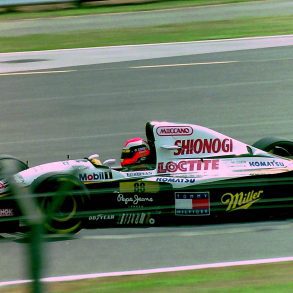
Lotus 109 (F1)
Season: 1994
The Lotus 109 was a Formula One car used by Team Lotus in the latter part of the 1994 Formula One season. It was designed by Chris Murphy who based the car on his Lotus 107 model.
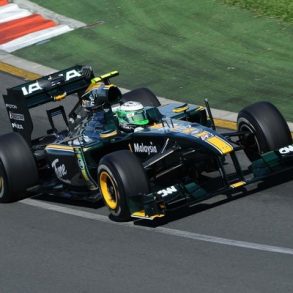
Lotus T127 (F1)
Season: 2010
Team Lotus F1 car, made for 2010 season. An average year in 2010 when it raced but it did show that it was faster than the other new teams of the same year which was a big win.
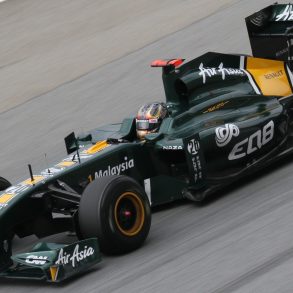
Lotus T128 (F1)
Season: 2011
Team Lotus F1 car, made for 2011 season. 2011 saw the car abandon its Cosworth engine in favour of one developed by Renault. The T128 was faster than the Virgin cars and HRTs.
Lotus IndyCars
Colin Chapman was a man who liked to push limits and to break new ground. His original thinking was extraordinary and when it came to racing he was able to leverage that originality into some of the most famous race cars ever built. We know he did in in F1, but many people don’t know that he also did it in IndyCar (albeit briefly). Chapman’s Lotus 29 Indycar of 1963 was part of a massive revolution by moving the engine from front to rear. Next came turbocharged engines, wings, advanced-aero and low-profile tyres. In 1968 Chapman joined the turbine revolution with a Lotus 56 that was a wedge-shaped and was powered by a turbine. They almost won too, were it not for mechanical failures at the end of the race. There were other innovations too, that was the Colin Chapman way. Finally there was the Lotus 64, a four-wheel-drive, wedge car with big wings front and rear. The engine was mounted backwards so it could drive the centrally mounted 4WD transmission. A crash in practice turned out to be the end of the Team Lotus at Indianapolis or any other Indycar race. Technically Lotus returned to IndyCar in 2011 through a partnership with KV Racing Technology. Lotus provided technical support
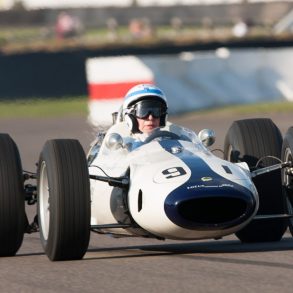
Lotus 29 (IndyCar)
Season: 1963
Lotus’s first Indycar was a development of the Formula 1 Lotus 25. It had a Ford V8 engine. Two 29s raced in the 1963 Indy 500, one finished second. The Lotus 29 dominated at Milwaukee later in ’63.
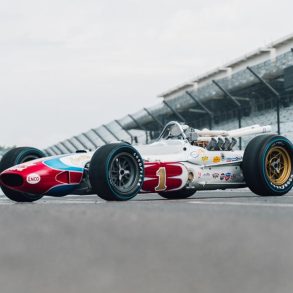
Lotus 34 (IndyCar)
Season: 1964
With experience under their belts and more time to prepare, the new-for-1964 Lotus 34 Ford looked set to finally take it all. While they didn’t win due to a failure, they get four USAC victories and two Indy 500 poles.
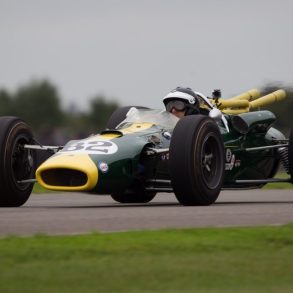
Lotus 38 (IndyCar)
Season: 1965
The 1965 Lotus 38 finally won the Indy 500 for Colin Chapman and Jim Clark after Clark had finished second in 1963 in the Lotus 29 and had retired after leading from pole in 1964 in the Lotus 34.
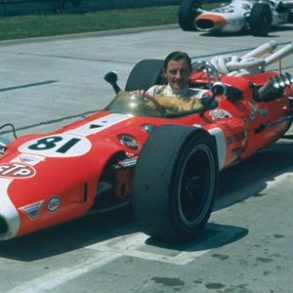
Lotus 42 (IndyCar)
Season: 1966-1967
The Lotus 42B was originally designed as an Indianapolis car but would do most of its racing in F5000. A Ford V8 was fitted to the first Lotus 42, which Graham Hill raced at Indianapolis in 1967.
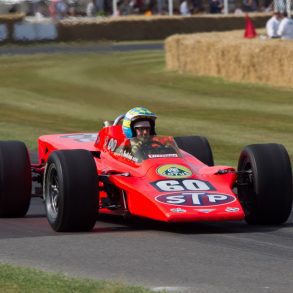
Lotus 56B (IndyCar)
Season: 1968
The all-new Indy racer was built around an aluminium monocoque chassis. The new Lotus was powered by a Pratt & Whitney turbine. At the end of the year, both turbine engines and four-wheel drive were outlawed.
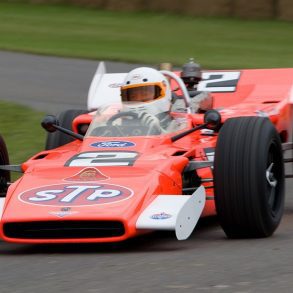
Lotus 64 Ford (IndyCar)
Season: 1969 Season (Didn't race)
Lotus retained much of the Lotus 56 chassis which had worked so well in 1968. A failure in one car lead to the cars being withdrawn from the race. Further controversy followed the remaining cars.
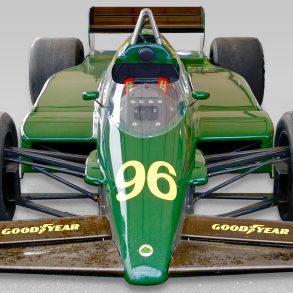
Lotus 96T (IndyCar)
Season: 1984
The Lotus type 96T was Team Lotus’s last Indycar. Despite the project’s promising beginnings, CART did not support a Works team and that meant no sponsorship and the end of the program.
Lotus F2, F3 & Formula Ford Race Cars
Although F1 was almost always the raison d’être behind Lotus, cars were often built for other formula especially F2 and F3 where the were often very successful. Lotus has had a lot of success in the many junior formula series over the years.

Lotus 27
Season: 1963
The Lotus 27 was a Formula Junior version of the Lotus 25 Formula One car for the 1963 Formula Junior season. Its body was aluminium monocoque with steel bulkheads.
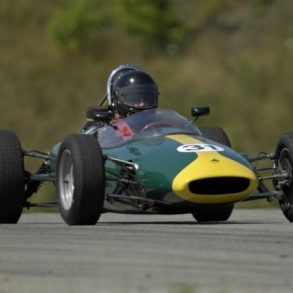
Lotus 31
Season: 1964-1965
The Lotus 31 was a racing car produced by Lotus for the new 1-litre Formula 3 introduced in 1964, replacing the expensive Formula Junior. It had 97hp from a Ford engine.
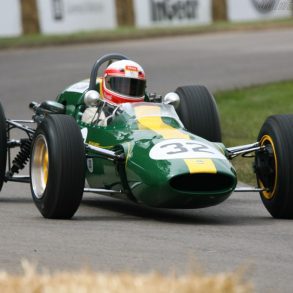
Lotus 32
Season: 1964-1965
The chassis of the 32 was an aluminium monocoque with steel front and rear bulkhead and centre section to bring it up to weight. Suspension followed the usual Lotus practice. Raced in F2 and Tasman Cup.
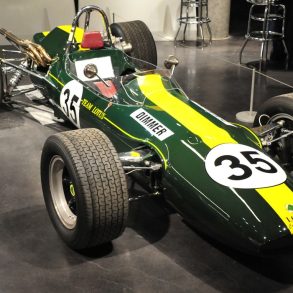
Lotus 35
Season: 1965
Colin Chapman decided that for 1964 Lotus needed a versatile single seater, based on the Lotus 25 and 33 F1 cars. The Lotus 35 was the result. It could accommodate a variety of engines and raced in F2, F3 and FB.
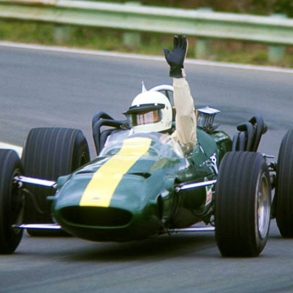
Lotus 39
Season: 1965-1966
Used as a Tasman Cup formula car (it was originally designed for F1), the Type 39 was powered by a Coventry Climax 2.5 liter engine. It was good enough for Jim Clark to finish 3rd in the 1966 Tasman Series.
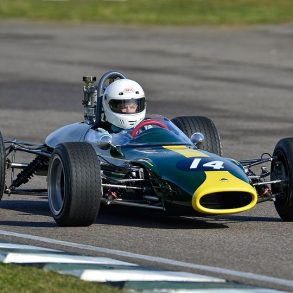
Lotus 41
Season: 1966-1968
The 41 was a multi-purpose machine, racing in Formula Three, Formula Two and Formula B. It was a clean-sheet car and they created a very stiff and cleverly designed race car.
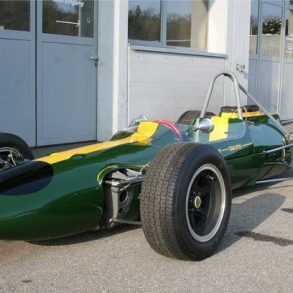
Lotus 44
Season: 1967
Formula two car built by Lotus. Unfortunately we could not find much public information about this car.
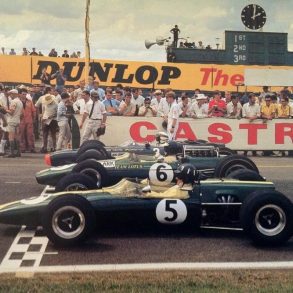
Lotus 48
Season: 1967
The Lotus 48 was a Formula 2 racing car designed by Colin Chapman. Bolted to the rear bulkhead was a steel tubular subframe, which housed the FVA engine and ZF gearbox.
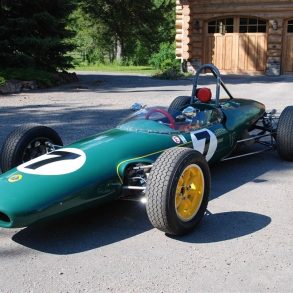
Lotus 51
Season: 1967-1969
Lotus built the Type 51, Type 51A and Type 51R during the 1967 and 1968 Formula Ford seasons. The Type 51 Series did very well in Formula Ford competition and this helped increase demand for the cars.
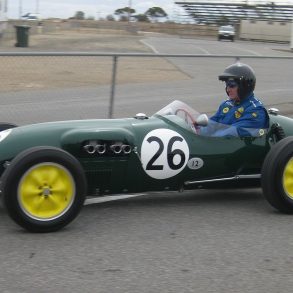
Lotus 12 (F2)
Season: 1958
The Lotus 12 was a Formula Two and Formula One racing car. Despite its engineering advances, the 12 was not a success in F1. In F2, the car won the class in the mixed F1/F2 1958 BRDC International Trophy.
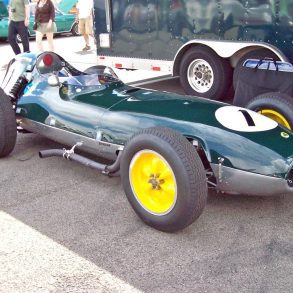
Lotus 16 (F2)
Season: 1960–1961
The Lotus 16 was constructed to compete in both the Formula One and Formula Two categories, and was the first Lotus car to be constructed for Formula One competition.
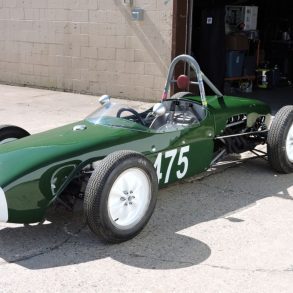
Lotus 18 (F3)
Season: 1960–1961
Lotus 18 was the first mid-engined car built by Lotus and was a marked improvement over Chapman’s early and only moderately successful front-engined formula cars.
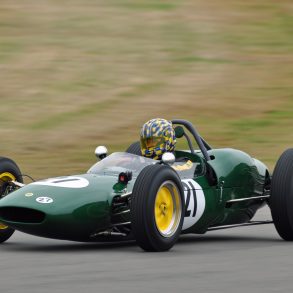
Lotus 20 (F3)
Season: 1961
Successor to the Lotus 18, the Lotus 20 was a Formula Junior car built for the 1961 season. The 20B was mostly the same as the 20, but with sway bar and stock inboard drum brakes in the rear.
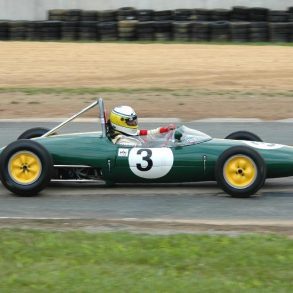
Lotus 22 (F3)
Season: 1962-1965
The 22 is a single-seat race car primarily for the Formula Junior series and most had a 1,098 cc (67.0 cu in) Cosworth Mk.IV or Mk.XI engine with about 100 hp.
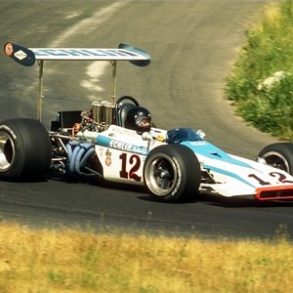
Lotus 70 (F5000/Form A)
Season: 1970
The Lotus 70 was a race car designed by Lotus for the Formula 5000 races. Originally designated the Lotus 68, the car was designed by Martin Waide and introduced at the end of the 1969 racing season.
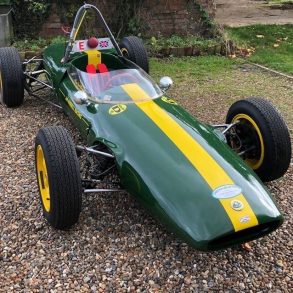
Lotus 31 (F3)
Season: 1964
The first F3 Lotus was the 31 which was basically a minor rework of the 1962 F Junior 22. In the year of Jackie Stewart and the Tyrrell-Coopers the 31 was very much an also ran with just one win.

Lotus 35 (F3)
Season: 1965
There was no specific F3 model for 1965 but several teams modified the F2 Type 35 to F3 spec. The lack of any interest by Lotus showed and the there was only one win for Lotus.
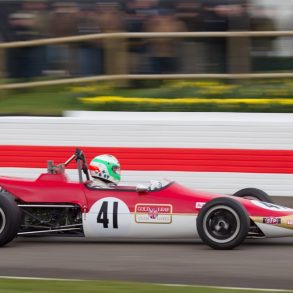
Lotus 41 (F3)
Season: 1966
The 41 was the result of a major rethink by Lotus. Results were at best reasonable. There were several victories in the season but once again Brabham was the leader by a mile and dominated.
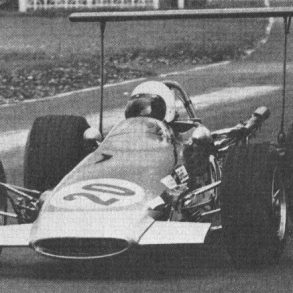
Lotus 55 (F3)
Season: 1968
Lotus took a 41C and modified the front suspension. In addition a dramatic (for the time) wedge shaped body was fitted. Only the one car was built and average performance meant Lotus moved to 59.
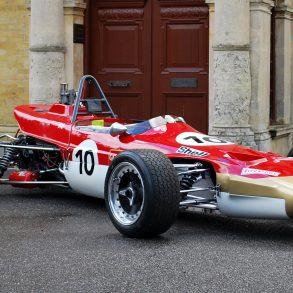
Lotus 59 (F2/F3)
Season: 1969-1970
The Lotus 59 was a dual purpose F2/F3 spaceframe chassis. The car proved a success, its chunky body hampered it a little on fast circuits but it had a reputation for putting the power down very well.
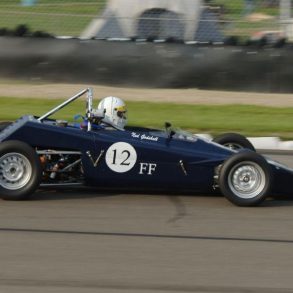
Lotus 61 (F Ford)
Season: 1969
Formula Ford, “the wedge”. The Lotus 61 was used all over Europe and America in Formula Ford. The car had Removable fiberglass nose, bellypan, and engine cover. It was moderately successful in Formula Ford.
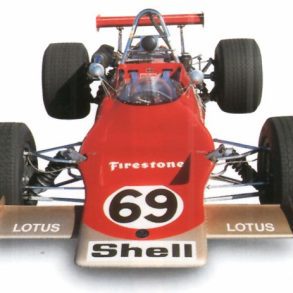
Lotus 69 (F2/F3/F Ford)
Season: 1970
The Lotus 69 was designed by Dave Baldwin for use in F2, F3, F Ford and FB/ Atlantic. The Novamotor twin-cam Ford powered car winning no less than 25 races out of 32 entered.
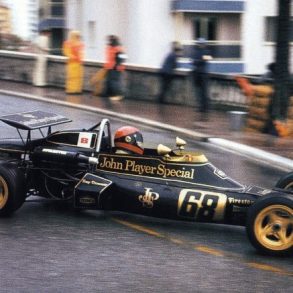
Lotus 73 (F3)
Season: 1972-1973
The 73 was the F3 answer to the F1 Championship winning 72. Built for use as a works car, it was designated a “John Player Special”. The car was ultimately too complex to be set up quickly for short F3 races.
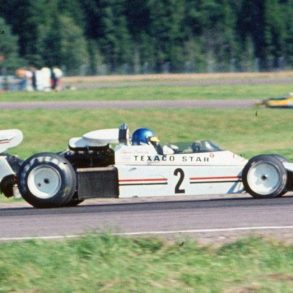
Lotus 74 (F2)
Season: 1973
The Texaco Stars were first shown to the public at the Belgian GP. The 16-valve racing version of the Lotus engine was developed by Novamotor (Gianni Pedrazzani) and it was claimed it would develop 275 bhp.
Lotus Race Cars (Sports Racers & Misc)
Lotus raced in a lot more than just Formula 1 and the usual open-top race series’. Lotus tried its hands at LeMans, GTE, Cup racing and more. In this section we take you through all of Lotus’ “other” race cars.
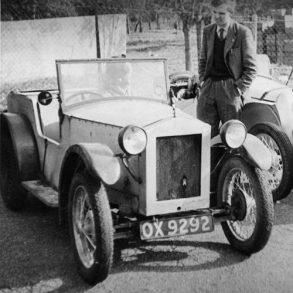
Lotus Mark I
Season: 1969
The first car designed and built by Colin Chapman in 1948 (while still a student at the University of London). Designed to compete as a trials car. Austin 7 chassis and running gear.
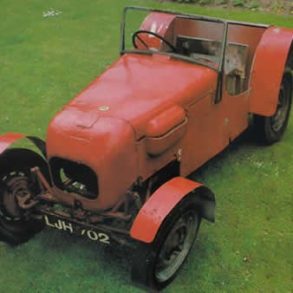
Lotus Mark II
Season: 1949-1950
Improved on the Mark I. Austin 7 body and now with a Ford engine and transmission. Had a cigar-shaped body with a rounded nose. Designed to compete in Trials events, it also won its class at Silverstone.
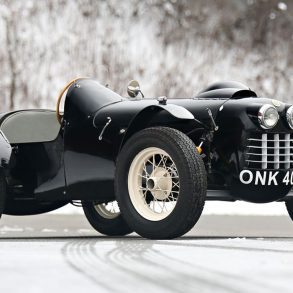
Lotus Mark III
Season: 1951
Colin got serious by building a single-seater sports car. This was the first “Lotus” branded car and it marked a change of focus for Chapman who built the Mark III to focus on road racing rather than trials.
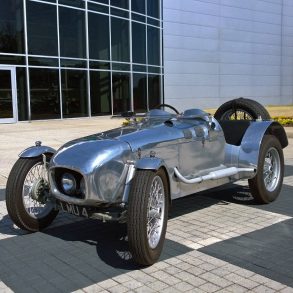
Lotus Mark IV
Season: 1952
Chapman went back to focusing on trials for the Mark IV. Once again it was based on the Austin 7 chassis with a Ford 4 cylinder engine. Immediately successful it won its class on its first attempt.
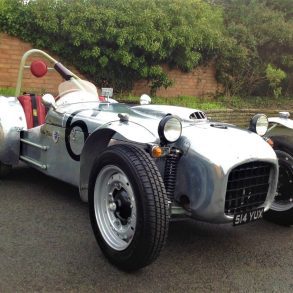
Lotus Mark VI
Season: 1953-1957
Chapman’s first production race car. Essentially a kit car that customers would buy and add whatever engine and gearbox they wanted. This flexibility meant it could be used in a lot of race series’.
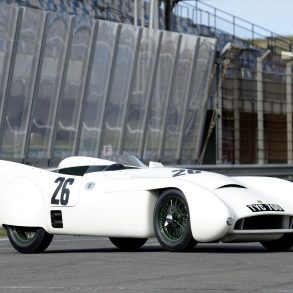
Lotus Mark VIII
Season: 1953-1955
The Lotus Mark VIII car was Colin Chapman’s first fully enclosed aerodynamic design. It was a lightweight 1100 lbs powered by an 85 bhp engine and a maximum speed of 125 mph.
Lotus Mark IX
Season: 1954-1955
A total of about thirty of the Mark IX sports racing cars were produced in various forms, and these were successfully raced in both Europe and the US. It had a new chassis compared to the Mark VIII.
Lotus Eleven
Season: 1956-1957
The Lotus Eleven was a small displacement sports racer (750 – 1500 cc) made by Lotus in 1956. The car’s most notable race result was 7th overall at the 1956 Le Mans. A design update happened in 1957.
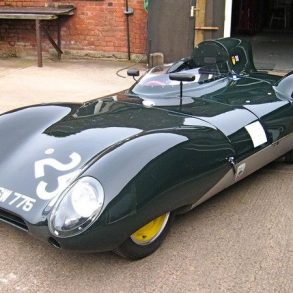
Lotus 13 (Eleven Series 2)
Season: 1956-1958
The later versions of the Lotus Eleven (built in 1958) were officially called Eleven Series 2, but were informally referred to as Lotus 13 because they were made between the 12 and 14 (13 was not used by Lotus).
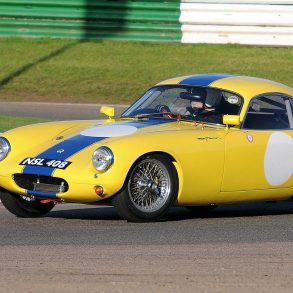
Lotus 14 (Elite)
Season: 1957-1963
The Lotus Elite was the first production street car. Like its siblings, the Elite was run in numerous formulae, with particular success at Le Mans and the Nürburgring. We are adding it here because it raced.
Lotus 17
Season: 1959
The Lotus 17 was Chapman’s answer to the Lola Mk 1. It was essentially a smaller, even lighter, even more aerodynamic sports racer update of the Eleven which was being beaten by the Lola Mk I.
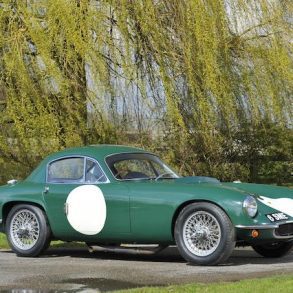
Lotus LX (Le Mans)
Season: 1960
Lotus Elite road car built to win at Le Mans with a 2.0 L FPF engine. However, its Le Mans foray was ill-starred from the beginning. A number of issues lead to the Le Mans entry being cancelled.
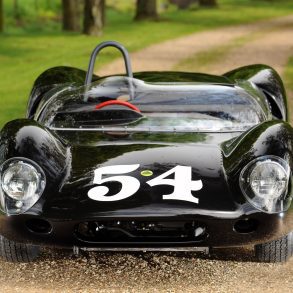
Lotus 19
Season: 1960-1962
Mid-engined larger displacement sports racer, “Monte Carlo”. The 19 and 19B were mid-engine, rear wheel drive sports racer with a fiberglass body over a space frame. The car raced in Group 4.
Lotus 23
Season: 1962-1963
Small displacement mid-engined sports racer. Nominally a two-seater, it was purpose-built for FIA Group 4 racing in 1962–1963. To comply with FIA, it had a regulation trunk space to the right-rear of the driver.
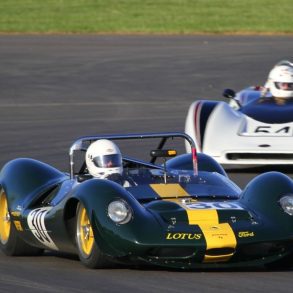
Lotus 30
Season: 1964
This was Chapman’s first attempt at a large displacement sports car. With a Ford small block V8 it races in both British and international races. Fun fact is that it was originally equipped with headlights and tail lights.
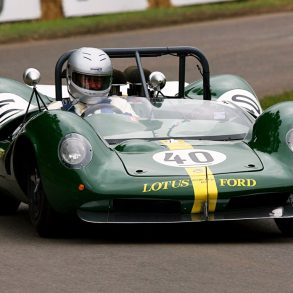
Lotus 40
Season: 1965
The Lotus 40 was a further development of the Lotus 30. Equipped with 15in wheels and vented disc brakes as well as a larger engine, the 40 was just as recalcitrant as the 30. Tough race car.

Lotus 47
Season: 1966-1970
Racing version of Europa. The very first Type 47 was based on a modified Europa while all subsequent cars were produced entirely by Lotus Components rather than the main factory.
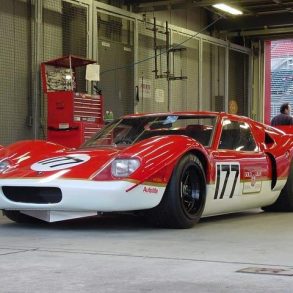
Lotus Europa Type 62
Season: 1969
A tubular space framed Europa coupe with a 1990cc 220bhp Vauxhall based slant four engine and used double wishbone suspension at both front and rear. Only 2 built.
Lotus Esprit X180R
Season: 1991-1994
In 1990 Lotus needed a race program to promote the Esprit in the US market. To do this they upgraded an Esprit SE to race in the SCCA series. The new car, strictly race prepared, was called the Type 105.
Lotus Esprit Type 114
Season: 1996-1997
The Lotus Esprit GT1 car was unveiled at the Paul Ricard circuit for the first race of the 1996 GT series. The new racer features the Lotus V8 engine, a new six-speed racing transmission. It raced in GT1 and GT2.
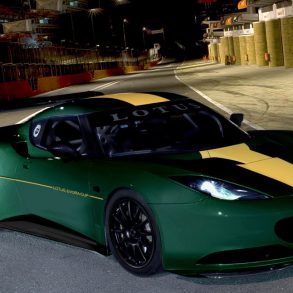
Lotus Evora GT4/Cup
Season: 2010
The Evora Cup race car was designed to offer a level of performance that would make it competitive in GT4 racing. The car was eligible to compete in a number of different national and international serie
Lotus Evora Type 124
Season: 2010
The Lotus Evora Type 124 Endurance Racecar has been developed from the award-winning Evora road car and is built to FIA regulations and safety standards.
Lotus Evora GTE
Season: 2011
In 2011 Lotus re envisioned their Evora into the GTE race car. It was made for outright endurance racing at events like the 24 Hours of Le Mans. The body is entirely new and constructed from carbon fiber.
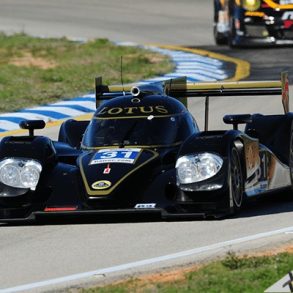
Lotus T128 (Le Mans)
Season: 2012
Race car built for 24 Hours of LeMans. Lotus publicly announced its T128 programme on the weekend of the 2012 24 Hours of Le Mans. It did not have much success in prototype racing.
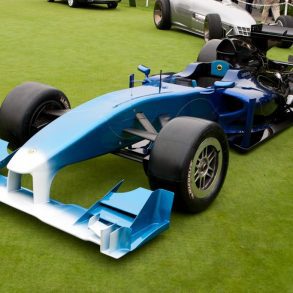
Lotus Exos T125
Season: 2010
The Type 125 Exos is the third of a batch of competition cars. The T125 is powered by a Cosworth 3.5 litre GP V8 engine producing 640bhp linked to a six-speed semi automatic gearbox with paddle shift.
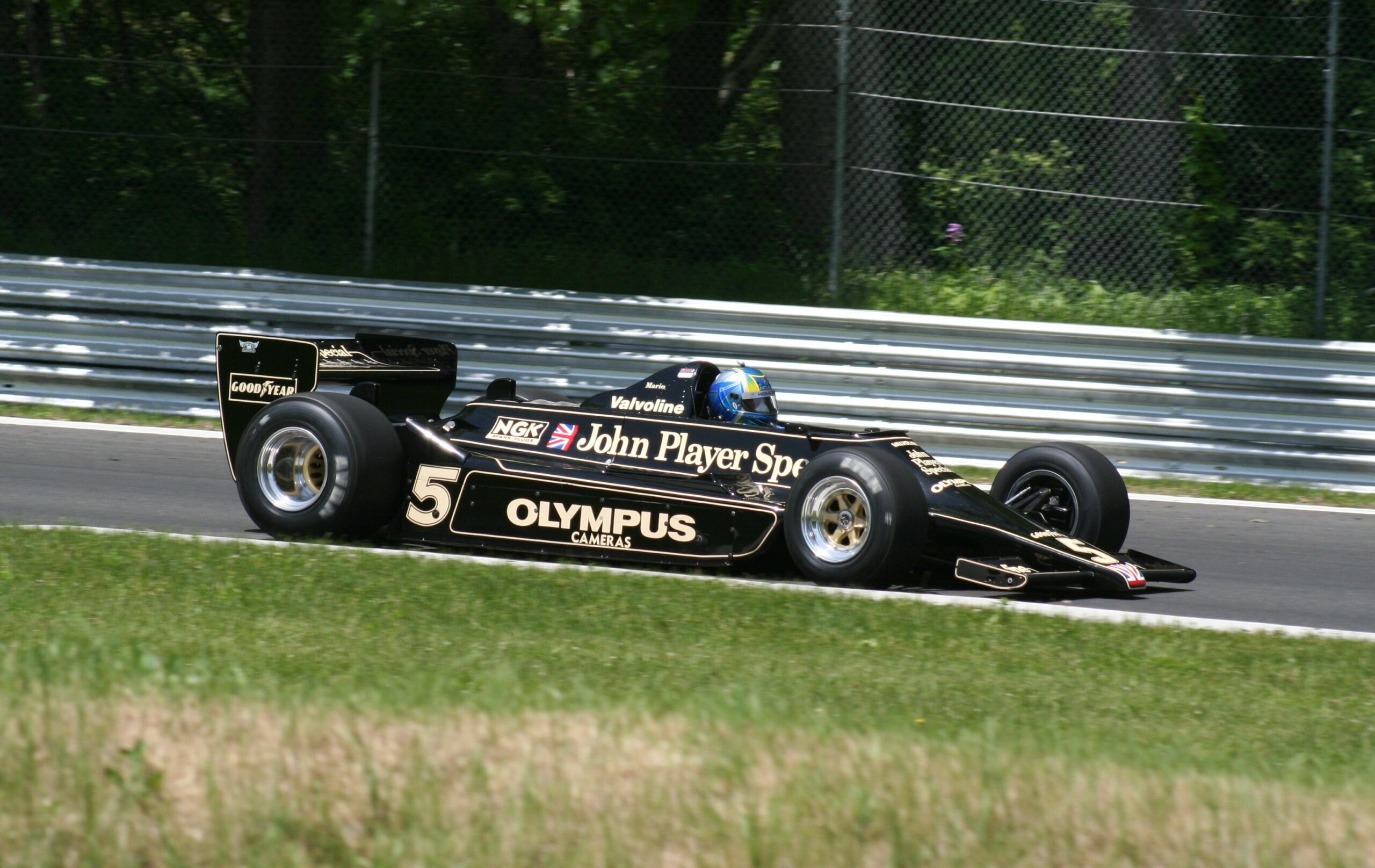
Best Lotus Race Cars Ever Created
We Pick The Ten Greatest Lotus Race Cars In History
We recently put together a full list of all the Lotus race cars ever to turn a wheel on-track (we also created a full list of all Lotus production cars for those interested in that kind of thing). Part of that research was an eye-opening view of just how innovative Lotus was when it came to racing. Below, we pick the best Lotus race cars in ever made, a list of innovative, unique and dominant machines that raced in everything from Formula 1 to IndyCars and more.
1. Lotus Type 11 (Eleven)
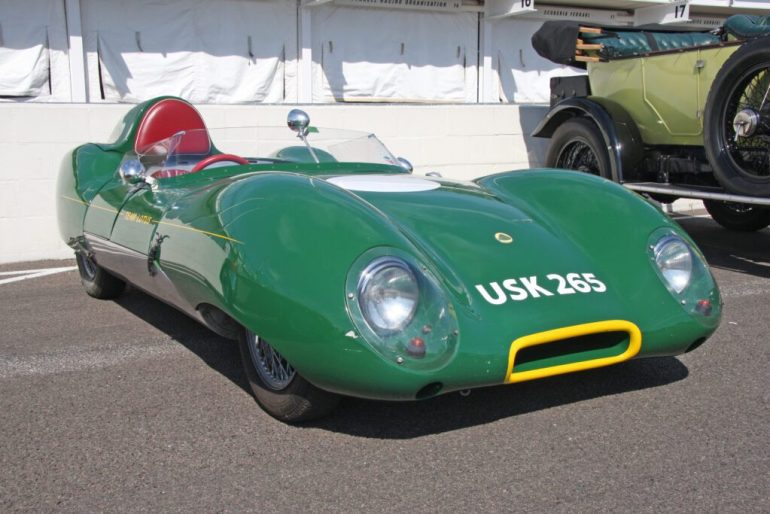
Why Is This The Best Lotus Race Car?
The Eleven achieved a historic win in the 750cc Class of the Index of Performance at Le Mans. At the Earls Court Motor Show the Type 14 Elite was shown for the first time to great acclaim. This was the FIRST Lotus to carry a glass fibre composite body that also acted as the chassis.
The "Eleven" was a class winning car at Le Mans. It set the world speed record for an 1100cc (67 CID) car at 143 mph! The Eleven won in class at the Le Mans 24 hours of Endurance in the 1500cc and 1100cc classes and took the overall win for the Index of Performance.
2. Lotus Elite (Type 14)

Why Is This The Best Lotus Race Car?
In 1959 the Lotus Elite made a huge impression in racing. Sportscar racing was in decline, while GT racing was booming, partly because of the high windscreens the FIA insisted on which slowed the sports-racers.
Since race 1.3-litre Elites could hit 137 mph with just 110bhp, Colin Chapman figured that one fitted with a 180bhp 2-litre Coventry Climax motor could win Le Mans.
It was never expected to finish, but two Elites started and we were I-2 in class.
3. Lotus Type 18
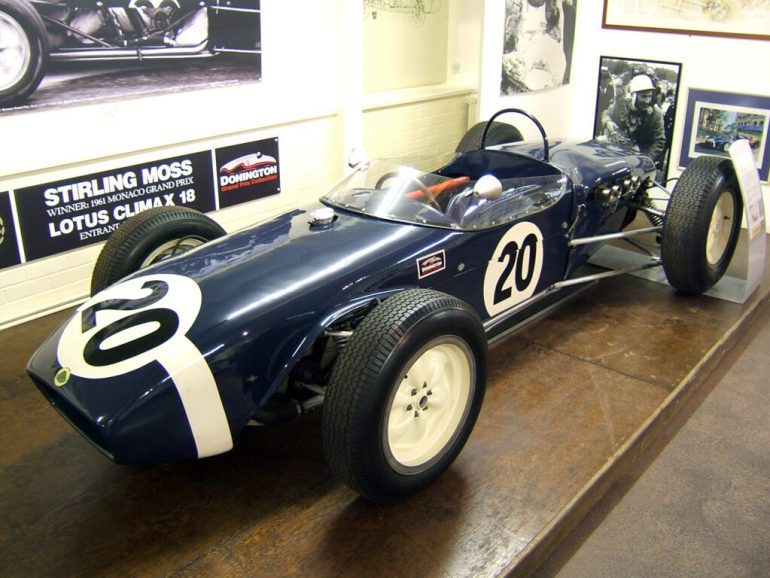
Why Is This The Best Lotus Race Car?
Lotus 18 was the first mid-engined car built by Lotus and was a marked improvement over Chapman’s early and only moderately successful front-engined formula cars. The 18 was replaced by the 21 in F1.
The Lotus revolution began with the Lotus 18. Although underpowered when compared to the then dominant Ferraris, the Lotus 18 was capable of out handling them.
In the hands of Sterling Moss, Lotus scored its first Formula One victory at the 1960 Grand Prix of Monaco.
4. Lotus Type 21
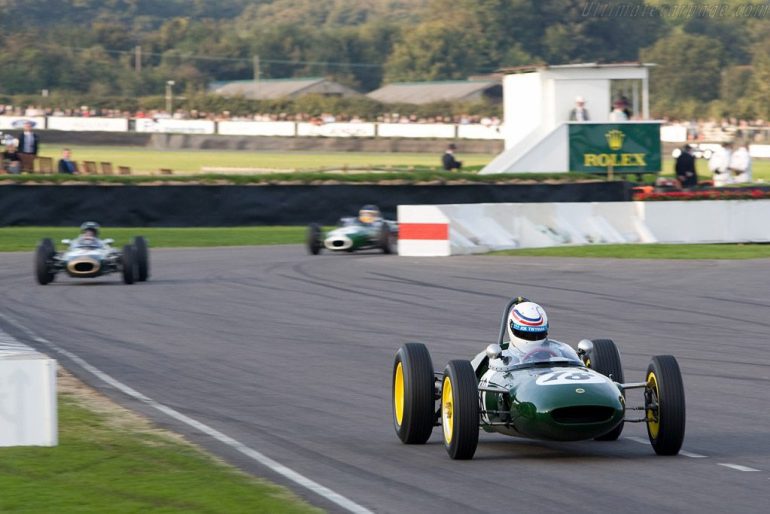
Why Is This The Best Lotus Race Car?
The Lotus 21 had a tubular spaceframe structure skinned with fibreglass panels.
Used by the works Lotus team, the 21 was the first works Lotus to win a Formula One Grand Prix (Innes Ireland took first place at Watkins Glen, USA).
Demonstrating the typical ‘can do’ attitude of Team Lotus, in only 6 weeks the Type 21 was designed and built to compete in the 1961 Formula One season.
5. Lotus Type 25
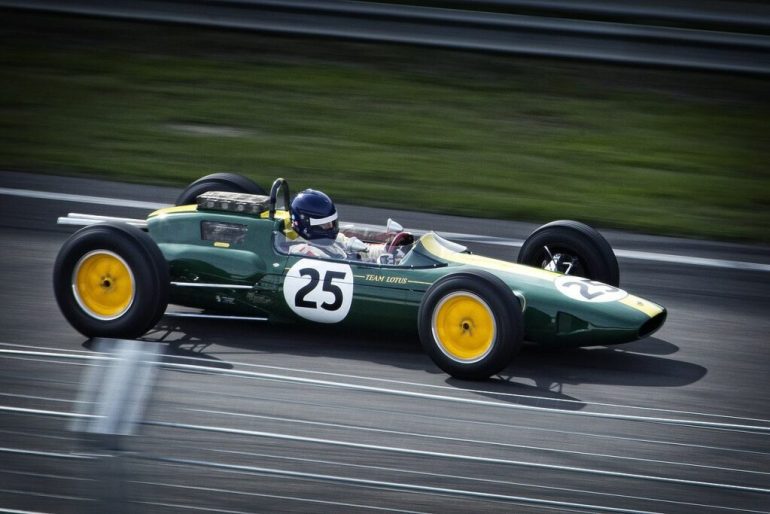
Why Is This The Best Lotus Race Car?
It was the first fully stressed monocoque chassis to appear in Formula One. In the hands of Jim Clark it took 14 World Championship Grand Prix wins and propelled him to his 1963 World Championship title. The 25 was the first F1 car to use a revolutionary fully stressed ‘monocoque’ chassis design which was revolutionary at the time because it abandoned all the existing conventions for building race cars and reinforced Chapman’s reputation as a brilliant engineer. Winning four Formula 1 races in its first year, at the hands of the talented Jim Clark, just missing out on the Championship in the final race.
In 1963, with Jim Clark at the wheel of the Type 25, Lotus secured its first Formula One Constructors’ Championship, and the Drivers title; this was also the first Drivers’ World Championship for Clark, winning seven out of ten races. Both titles were won with an astonishing maximum points.
That ’63 season was dominant, Clark scoring almost twice as many points as his closest chasers, Graham Hill and Richie Ginther. It was the first of six Team Lotus drivers titles between 1963 and 1978.
6. Lotus Type 29
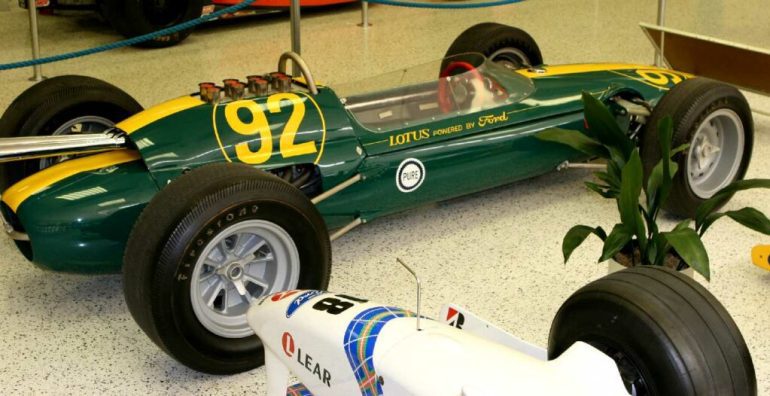
Why Is This The Best Lotus Race Car?
Chapman developed his first Indianapolis car, the Type 29. Dubbed the Type 29, Lotus' first Indy racer was effectively an enlarged version of the successful F1 car. This was done to meet the minimum wheelbase requirement and to accommodate for the new engine, which was over twice as large as the diminutive Coventry-Climax V8 used in the Type 25.
As on the F1 car, the chassis consisted of two sheet aluminium pontoons that were connected by various steel cross-members and double as the bottom of the body. Chapman’s Lotus 29 Indycar of 1963 was part of a massive revolution by moving the engine from front to rear.
With a power to weight ratio of over 800 bhp per ton Lotus proclaimed it to be one of the most, if not the most potent piece of racing machinery ever built. After leading the Indy 500 for 28 laps, Jim Clark finished in second place.
7. Lotus Type 34
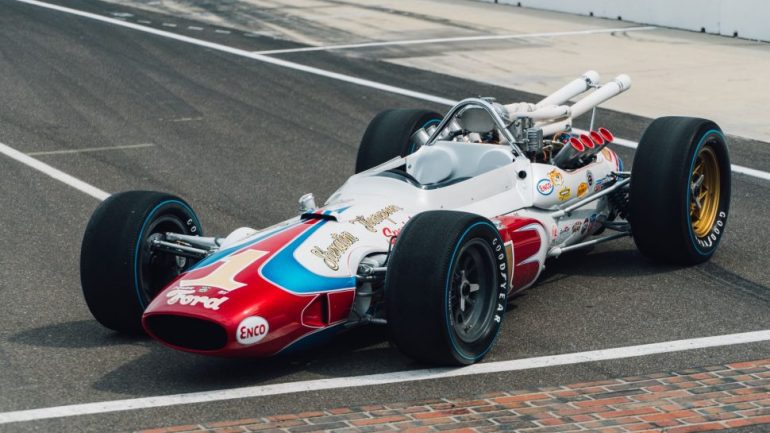
Why Is This The Best Lotus Race Car?
The ‘winningest Indy Lotus’. The Type 34 was Lotus' second Champ Car. Based on the earlier Lotus 29, it was a very similar car which differed principally in featuring a four-cam 4195 cc (255ci) DOHC Ford V8 with Hilborn fuel injection, producing 425 bhp (317 kW), through a ZF 2DS20 gearbox.
At Indianapolis, Jim Clark qualified on the pole, joined by five other similar cars. The Dunlop tyres failed during the race, leading to Clark crashing and the second 34 being parked. It was driven in period by A.J. Foyt, Dan Gurney, Parnelli Jones and Jim Clark.
With Jones driving, Lotus 34, chassis 2 (the car in the above photo), earned its first pole, and first win, at Trenton in September 1964, but it was Foyt who’d racked up seven more pole positions and three more victories during the 1965 season with the car.
8. Lotus Type 33
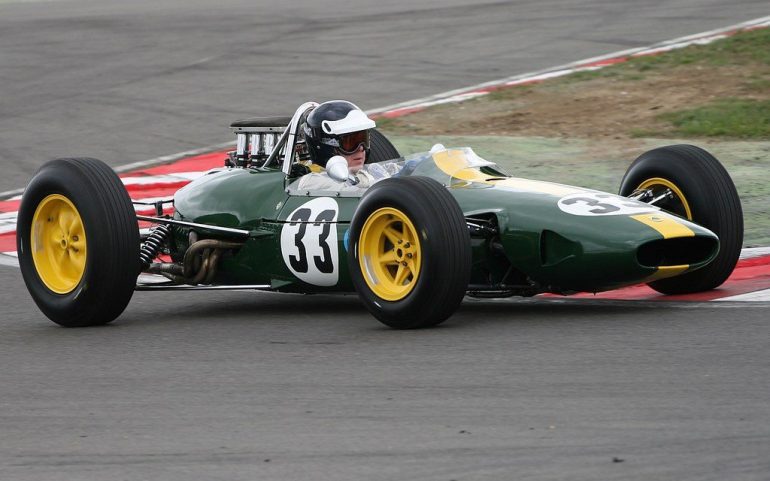
Why Is This The Best Lotus Race Car?
The Lotus 33 was closely based on the 25, and the specifications of the two cars appear similar but with the advent of wider Dunlop tires mounted on 13in wheels drove a need for new suspension design and a stiffer chassis. The Lotus 33 also had a slightly longer engine bay to accommodate the later versions of the Coventry Climax V8 engine.
This development of the successful Lotus 25, in the hands of Jim Clark it won 5 World Championship Grands Prix in 1965, assisting Clark to his second World Championship.
The 1965 season began with South Africa holding the first race which was dominated by Clark in his Lotus followed by Surtees and Hill. Monaco was next and the race was held without Clark, who was at Indianapolis winning that year's classic in a Lotus Type 38 powered by an American Ford. Clark returned for Spa and won in the wet.
He continued his success. With only the top six races counting Clark claimed a perfect score and his second World Championship.
9. Lotus Type 38
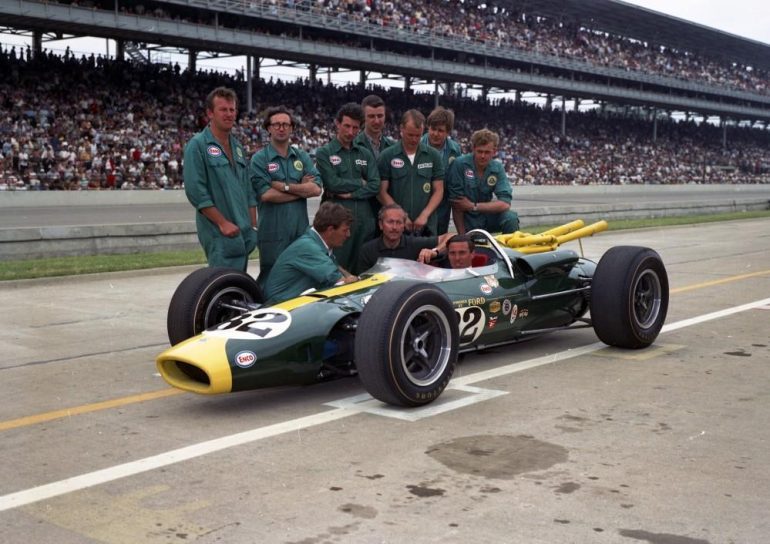
Why Is This The Best Lotus Race Car?
The 1965 Lotus 38 finally won the Indy 500 for Colin Chapman and Jim Clark after Clark had finished second in 1963 in the Lotus 29 and had retired after leading from pole in 1964 in the Lotus 34. In the new Type 38 Clark lead virtually from the start, averaging 150.686mph – a new record.
10. Lotus Type 49
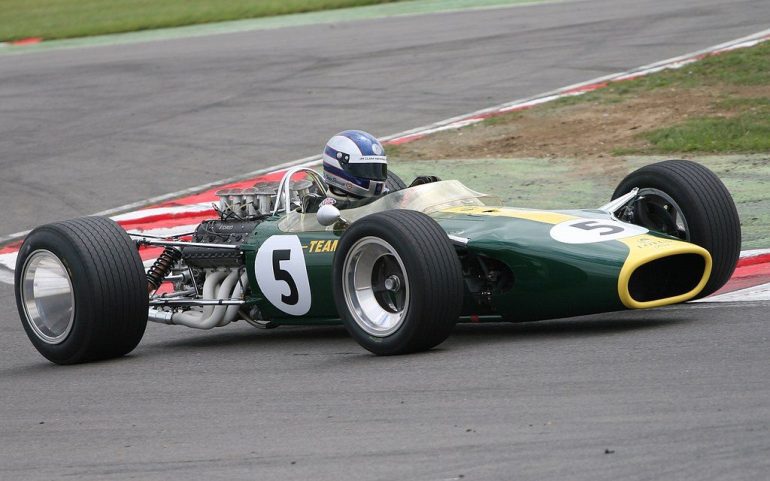
Why Is This The Best Lotus Race Car?
Announced in 1963 the 3-liter Formula was now one year old and after an unsuccessful 1966 season using a variety of engines including the H-16 BRM, Chapman was desperate for a new power source. He found one and boy did it work. Designed around the Cosworth DFV engine and built for the 1967 season, the Lotus 49 won on debut. Graham Hill went on to win that year’s title and the car continued winning races until 1970.
It was the first Formula 1 racer to be powered by that now famous Cosworth-Ford DFV V8, a motor which went on to dominate the Formula 1 scene for over a decade. Jim Clark took pole position in the following 11 Grand Prix races.
Lotus clinched the 1968 constructors with the subtle addition of front and rear wings to the Lotus 49, another first in Formula 1.
11. Lotus Type 56B
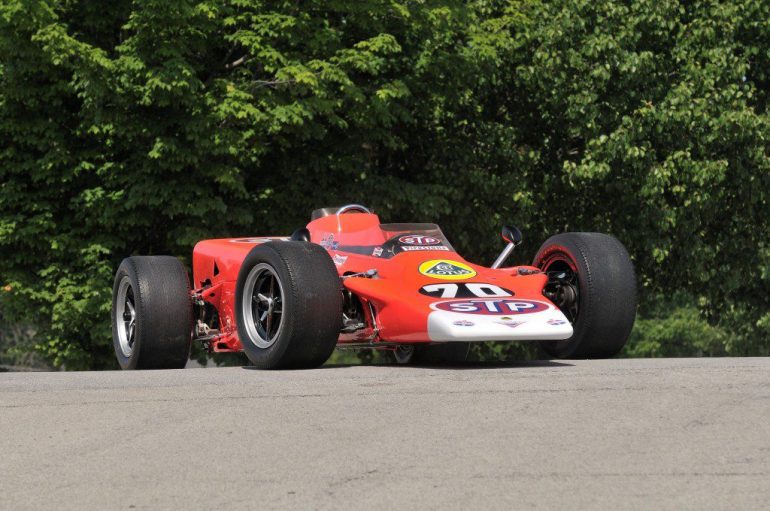
Why Is This The Best Lotus Race Car?
Made for the 1968 Indianapolis 500, the Type 56B was one of the most technologically advanced race cars ever made. It was gas-powered, but instead of a traditional internal combustion engine, it had a turbine engine (yeah, like the ones on jet aircraft).
They almost won too, were it not for mechanical failures at the end of the race. The all-new Indy racer was built around an aluminium monocoque chassis and used a Pratt & Whitney turbine.
At the end of the year, both turbine engines and four-wheel drive were outlawed.
12. Lotus Type 72
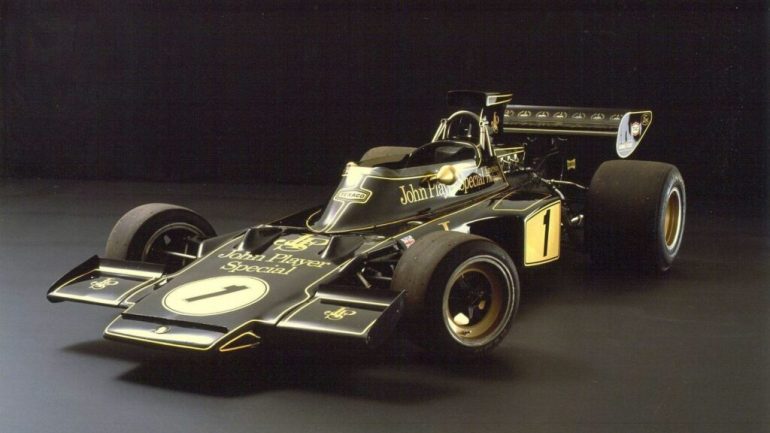
Why Is This The Best Lotus Race Car?
The car that most defined the whole first half of 1970s was the Lotus 72. Ask any long-time racing fan what car comes to mind when you say ‘Formula 1’ and at least half of them will think of wedge-shaped black and gold type 72.
It’s partly because the Lotus 72 participated in as much as 6 seasons and 74 World Championship races but most of all the car owes its fame to its record of success – 20 Grand Prix wins, 2 Drivers Championships and 3 Constructors Championship titles, results unabridged for more than a decade.
In 1970 when Team Lotus unveiled the innovative Type 72 F1 car it was very innovative. With inboard brakes, torsion bar springs and the use of mid-mounted, side radiators it was possible to create a car with a flat aerodynamic nose. It was also the first car to use a multi-element rear wing. In 1972, in the Type 72, now sporting the famous John Player Special livery, Emerson Fittipaldi won both Constructors’ and Drivers’ Championship.
13. Lotus Type 79
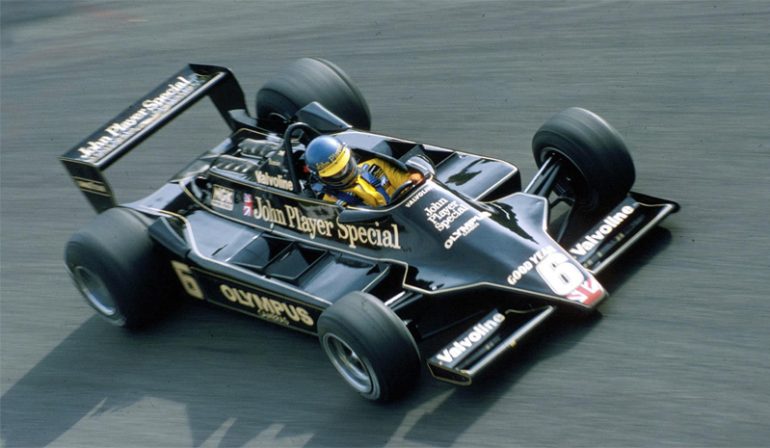
Why Is This The Best Lotus Race Car?
We cannot mention the Type 79 without talking about the Type 78 before it. There are strong reasons to believe that the Lotus Type 79 along with its predecessor the Type 78 stand as the most significant vehicle designs in racing history.
A little science first. Bernoulli’s equation, known as one of the basics of Fluid Mechanics Theory, states the following: if fluid flows through a constriction, its speed will rise and pressure will fall. Applied on racing car this theory goes like this: air is a fluid. If the bottom of the car is shaped correctly, it is possible to create a low-pressure area under the car. and said car will literally be sucked to the ground. That phenomenon is known as ‘ground-effect’. Since the cornering speed depends on friction between tyres and tarmac, and friction depends on vertical force which is equal to the sum of car’s weight and lift force generated by low pressure area beneath the car; the bigger the pressure-fall is, the better the car performs.
That was the principle behind the Lotus 78 was known as the “wing car” which raced in 1977 and 1978. It was the car that started the F1 ground effects era. The breakthrough was Chapmans insights on low drag air penetration based on the principals above. Lotus continued its winning streak in F1 with the introduction Type 78 and driven by Mario Andretti, Gunnar Nilsson and at the end of the season by Ronnie Peterson it had five wins in 1977. Lotus settled for second place in the Constructors’ Championship.
It was the Lotus 79 that was the first F1 car to take full advantage of ground effects aero, pioneered by the Lotus 78 before it. The 79 was almost unbeatable during 1978. Team Lotus dominated Formula One that year – achieving 12 pole positions, and 8 wins, and yet another Constructors’ and Drivers’ double act.
14. Lotus Type 88
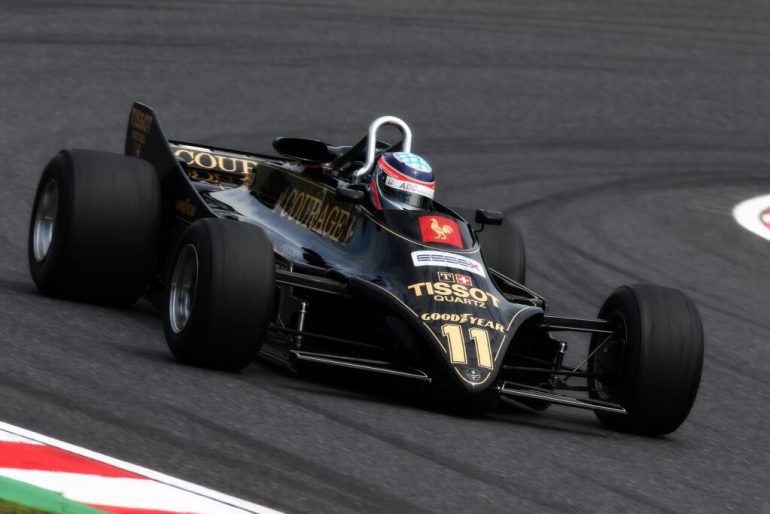
Why Is This The Best Lotus Race Car?
From 1981 on, the FIA seriously limited the ground effect of cars drastically. The Lotus 88 was built as a careful manipulation of the rule book which is why it makes our list. It was the first car designed with a carbon fibre monocoque, and it had an innovative two chassis set up.
Basically, the car consisted of a primary, external chassis that carried the aerodynamic bodywork, side pods, skirts and wings. The secondary, internal chassis carried the wheels, carbon fibre monocoque, fuel tank, the engine and the transmission. The inner, primary chassis was relatively soft sprung, which allowed the driver to be in quite a comfortable position, as he would not feel all those harsh bumps. The outer chassis, designed to cope with aerodynamic downforce, was attached on the primary chassis' suspension, close to the uprights by an extremely stiff coil spring damper arrangement.
Despite the fact that the scrutineers had declared the car legal, rival teams had protested and the car was destined never to compete in a Grand Prix. The FIA motivated that the second chassis was actually an aerodynamic device that acted directly on the wheel uprights, a feature that had been banned to improve the safety of fitting aerofoils on cars. Despite the protests of Lotus the car never raced in a Grand Prix.


